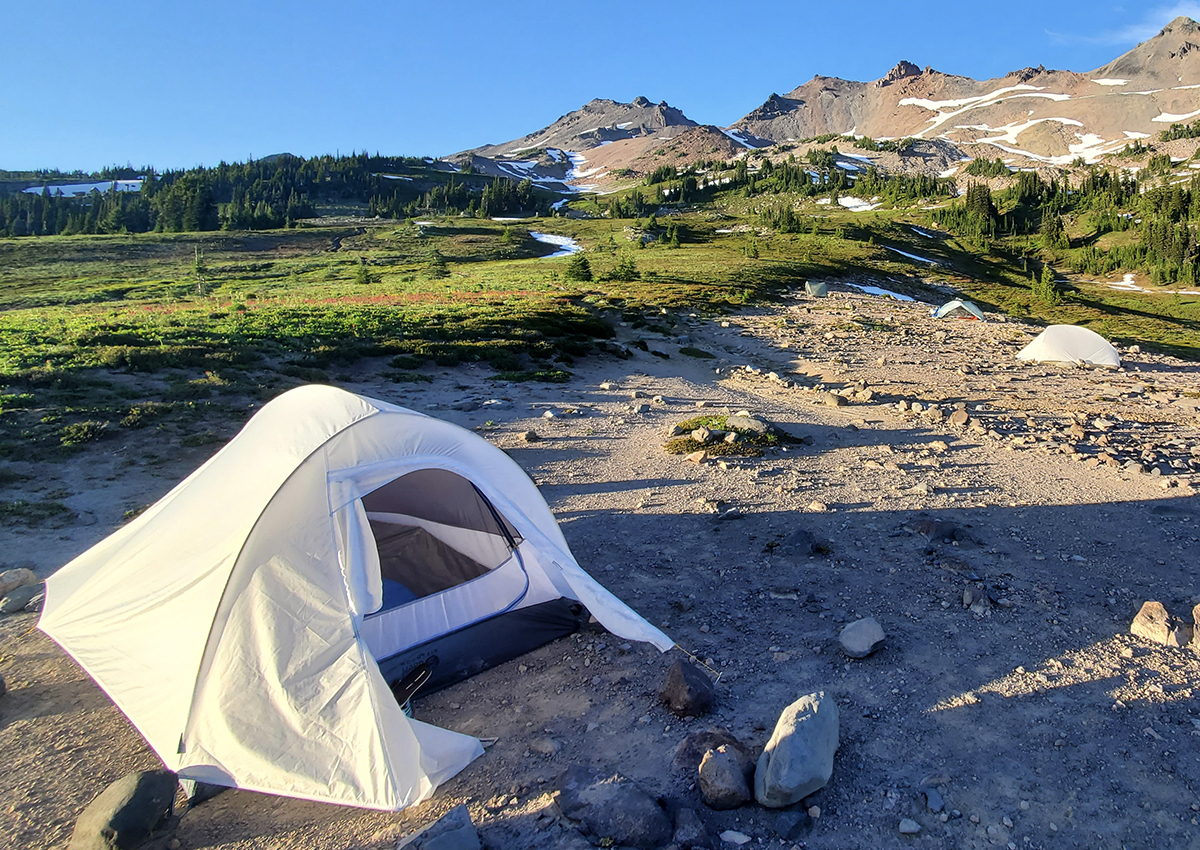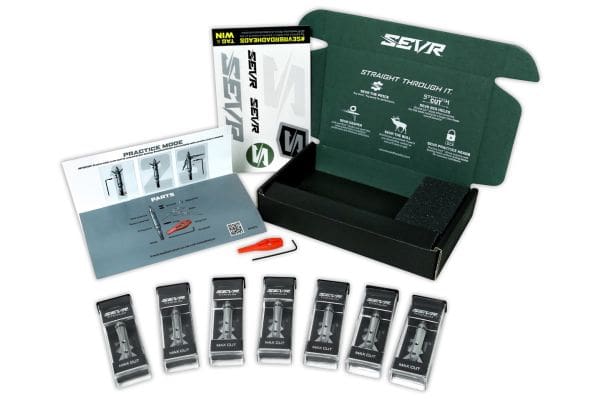We may earn revenue from the products available on this page and participate in affiliate programs. Learn More ›
Backpacking tents are our home in the wild. Inside, we can spread out our gear at the end of a long day and shut off our minds to get that eight (or 12) hours of sleep necessary to hit the next day running. To help you choose the right setup for your next backcountry adventure, Outdoor Life editors and contributors tested dozens of freestanding and trekking pole tents side by side on the Pacific Crest Trail and Oregon Coast Trail. Here are our top picks for the best backpacking tents.
↓ Jump to Freestanding and Semi-Freestanding Tents
↓ Jump to Trekking Pole and other Non-Freestanding Tents
How We Tested the Best Backpacking Tents
Selection
Backpacking tents are selected across a wide range of manufacturers, from big names like MSR and Mountain Hardware to cottage companies like Seek Outside and Durston. We look at a range of tent styles — both freestanding and trekking pole — in order to get a better sense of which tents are appropriate for people of various sizes and with different experience levels.
Since our testing is focused on backpackers, particularly backpackers looking to crank out big mile days, more consideration is given to weight than to non-necessary features. We also divided the tents into two categories:
- Freestanding and Semi-Freestanding: Freestanding tents can be set up without stakes, while semi-freestanding tents can stand up without stakes, but will be missing some real estate on the inside. These tents should still be staked down during windy conditions and to help maximize the utility of the rainfly during downpours.
- Trekking Pole and Non-Freestanding Tents: Non-freestanding tents use poles, but must be staked into the ground in order to stand up. Trekking pole tents are a subset of non-freestanding tents that use hikers’ trekking poles in place of dedicated tent poles.
Testers
To test the best backpacking tents, OL recruited a testing panel with a range of experience levels, body types, and preferences.

Ashley Thess
- Adam Tycaster — Over 4,000 miles of backpacking experience, including the PCT 2014 and CT 2017. Height: 6-foot-3.
- Alex Robinson — OL editor-in-chief; a backcountry big game hunter and fair-weather trail runner. Height: 6-foot-2.
- Ashley Thess — OL associate gear editor. Over 600 miles of backpacking experience. Height: 5-foot-7.
- Diana Helmuth — Author of How to Suffer Outside (National Outdoor Book Award winner). Over 1,500 miles of backpacking experience. Height: 5-foot-11.
- Jac “Top Shelf” Mitchell — Over 11,000 miles of backpacking experience including the PCT 2014, CDT 2016, AZT, 2017, and GET 2017. 5-foot-6.
- Laura “Chop Chop” Lancaster — OL staff writer. Over 4,000 miles of backpacking experience, including the PCT 2014 and CT 2017. 5-foot-5.
- Patrice “Steady” La Vigne — Gear reviewer, Denali guide, and author of Between Each Step. Over 7,000 miles of backpacking experience, including the AT 2011 and Te Araroa 2014-2015. 5-foot-5.
- Sven “Magic” Anderson — 1,350-mile LASH (PCT) 2022. Hiking with Parkinson’s disease. 6-foot-2.
Testing
Outdoor Life conducts an annual backpacking gear testing trip that focuses on innovative lightweight and ultralight backpacking gear. These testing trips take place on America’s national scenic trails, including three nights along the northernmost section of the Oregon Coast Trail and four nights on a stretch of the Pacific Crest Trail in the Goat Rocks Wilderness.
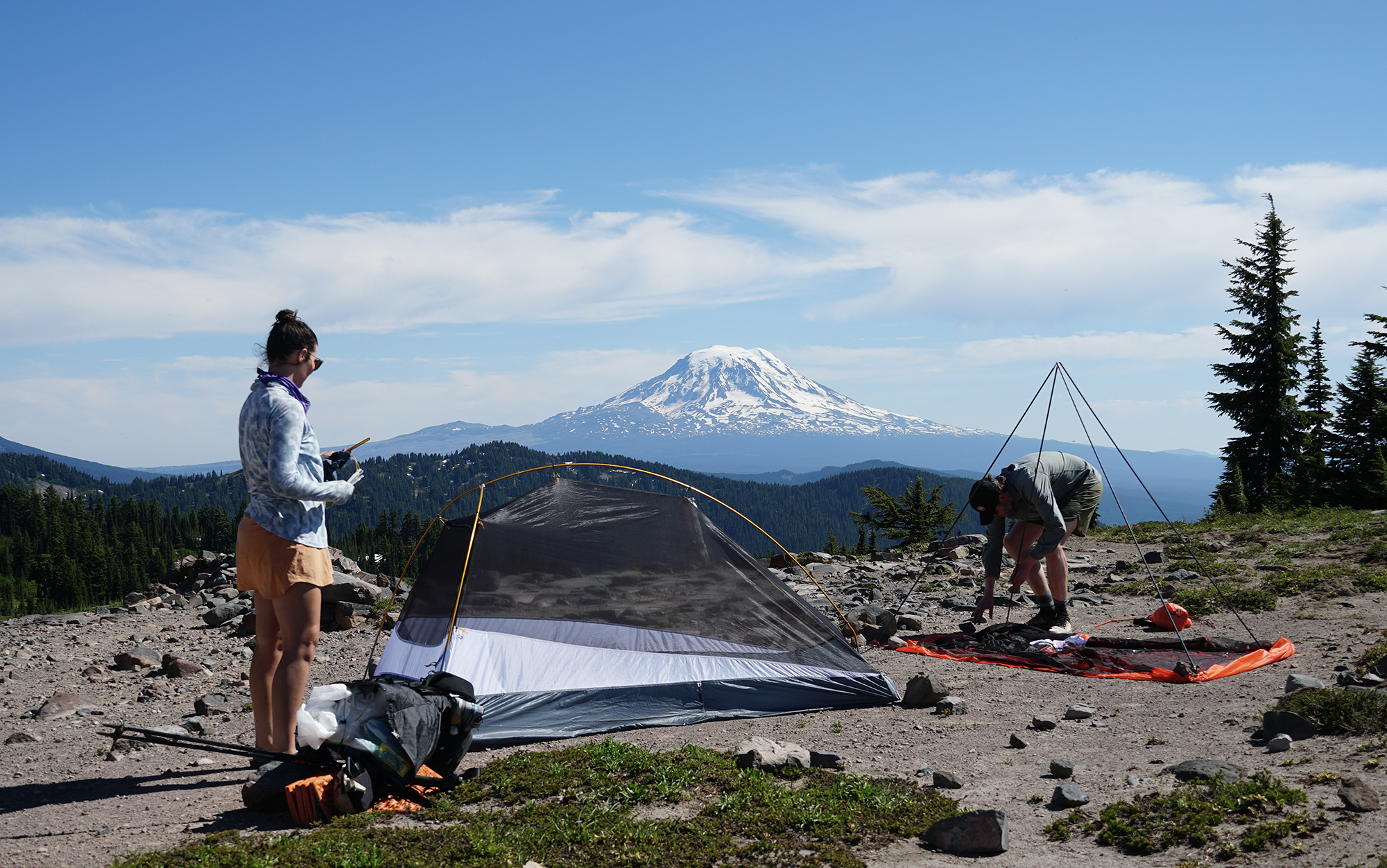
Alex Robinson
These trips usually see the testing group covering 10 or more miles each day, setting up camp in environments ranging from the alpine to lowland coastal areas to deep forest. Testers receive a new tent for testing each evening, which they are responsible for setting up, sleeping in, taking down, and carrying to the next camp. Small details, like a too-small door, a sticky zipper, or difficult to use connection points can start to really jump when you compare this many tents side by side in a real-world environment. Where possible (and reasonable) testers set up their tents in less than ideal conditions to see how they would fare in the elements.
Scoring
After taking copious notes in the field, the testing team then spends a day filling out scoring sheets for each item in the test. When scoring tents, we set up each tent again so that we could compare and contrast their relative merits. We also discuss and compare with one another, which is helpful for understanding how and why experiences with the same gear can vary from person to person.
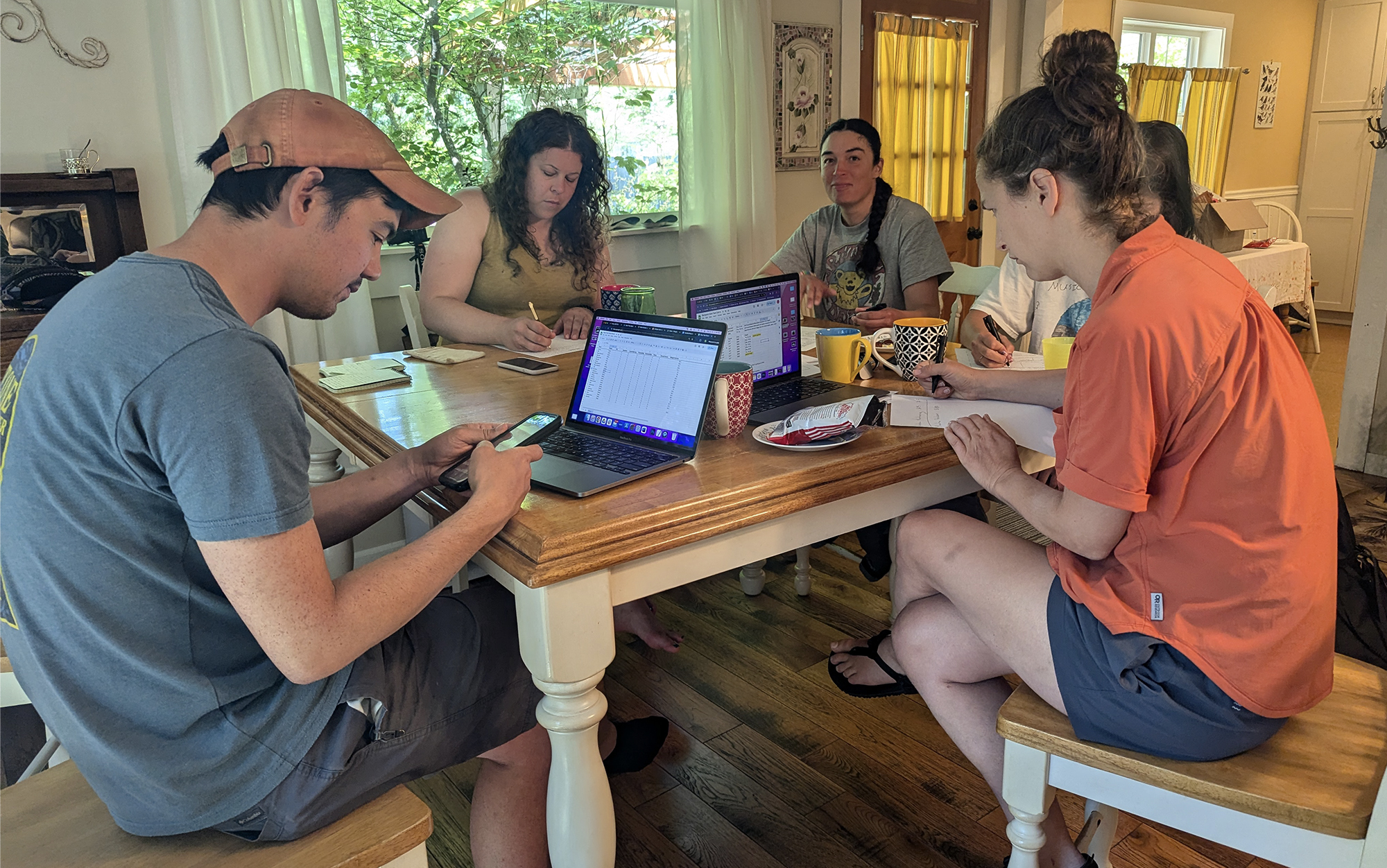
Adam Tycaster
Backpacking tents are scored on set up, interior space protection, and value, in addition to other controlled tests we run. Scores are then averaged among the testers, with the top scoring tents receiving top honors.
- Ease of set up: Tents were set up by multiple testers, allowing us to assess which were suitable for newbie ultralighters and which should be handled only by experienced backpackers.
- Interior living space: Most backpackers will spend eight or more hours a day sleeping — that’s a third or more of your time out on the trail. A tent that feels claustrophobic or cramped will make for a worse outdoors experience and potentially negatively affect your sleep at night. We assessed the usable space in each tent, noting how the slope of pitch or vestibule size changed our experience.
- Protection: Testers considered whether the tents they slept in provided sufficient protection from rain, wind, and condensation.
- Value: The price of an ultralight tent can vary wildly, from a couple hundred dollars to upwards of $600 — the most expensive ultralight tent we looked at costs well over a thousand. We ranked each tent on whether the setup, weight, and liveability is merited by the price point.
We also independently weighed the tents as used in the field. This is an important distinction, because, most manufacturers only provide “packaged weight” (everything that came with the tent) and “minimum weight” (just the poles, main body, and rain fly). But no one is bringing the instructions for the tent into the backcountry, and the vast majority of backpackers also don’t bring the repair kit. At the same time, skipping the stakes and the guy-out lines is just foolhardy. (Ultralight tent manufacturers sometimes complicate things even more by skipping the weight of stakes on non-freestanding tents.) Needless to say, the weights provided in the report card vary from manufacturer-provided weights.
Interior Space
A second test we pioneered during our review of two-person tents is OL’s Two Dudes in a Tent. In our experience, a “two person tent” can mean a few different things. Sometimes it means it’s a great tent for couples. Sometimes it’s just an extra large tent for a single person. Most of the time, it will fit two women pretty well. And sometimes it will actually provide enough space for two regular sized men to sleep next to each other without things getting awkward. This test consisted of two phases. In the first, Alex Robinson and Sven “Magic” Anderson — both over 6-foot-2 — got into each tent and evaluated whether or not they would want to share it while backpacking. For those tents that failed this metric (and there were plenty of those), Ashley Thess and Jac “Top Shelf” Mitchell tested to see which they would be willing to share with one another. One note on this test is that these results are not currently available for the tents covered in OL’s first round of backpacking gear testing, which focused on one-person models.
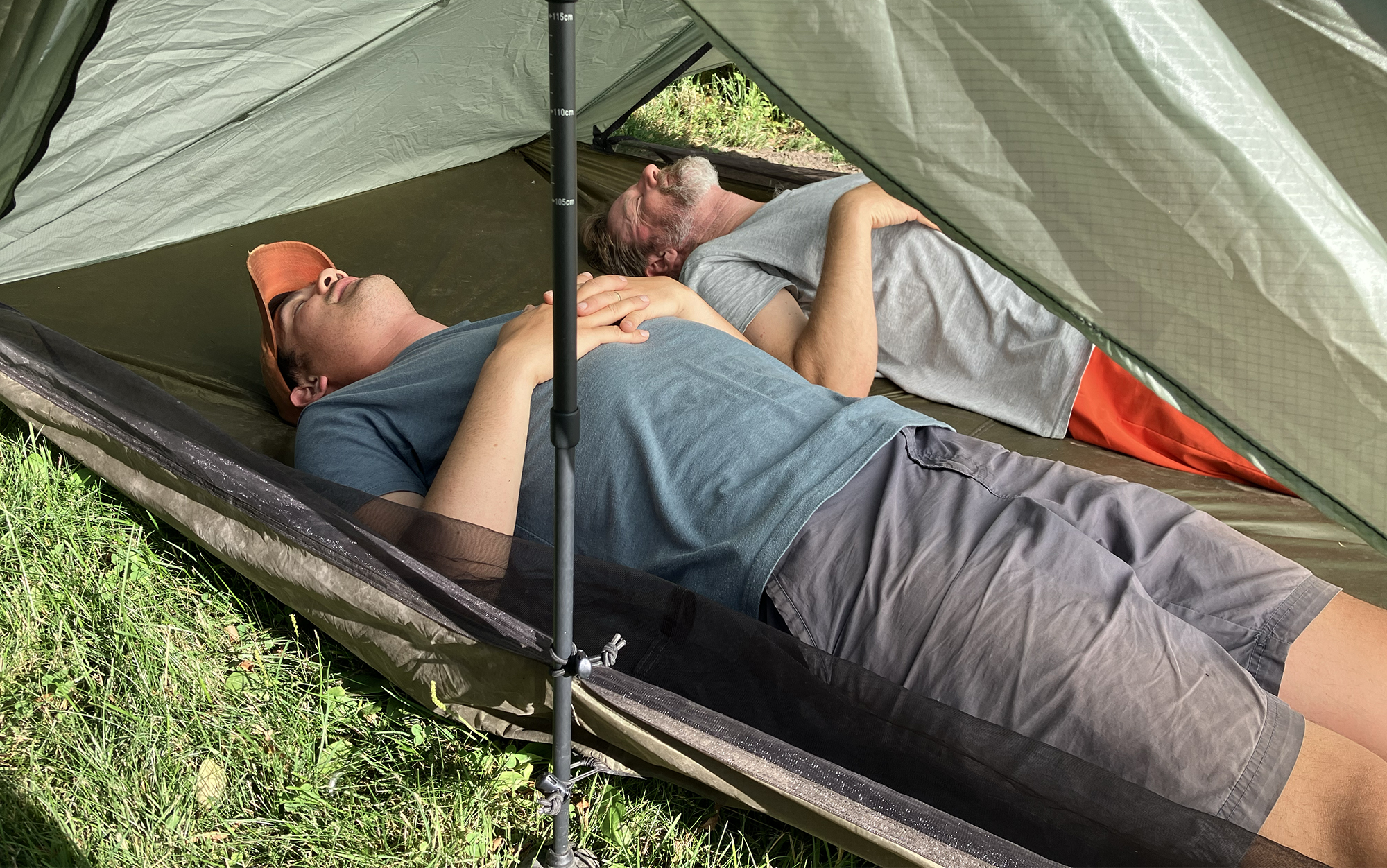
Diana Helmuth
Finally, many outdoor gear manufacturers are working on removing PFAS, a nearly ubiquitous forever chemical, from their waterproof gear as we approach the 2025 deadline set by California and New York. I queried manufacturers to see where they were in this process and have included that information below in the report card section. Generally, responses were very encouraging. Manufacturers have already made important strides in removing PFAS from the main fabrics of their tents, and are now working on getting it out of the trimmings (zippers is a big one that keeps coming up). Almost all had plans to be PFAS free by spring of 2025. Several are already there.
Read Next: PFAS Explained: These Forever Chemicals Are Being Banned from a Variety of Outdoor Products. Now Gear Makers Are Scrambling
Comparison Table
Below is a side-by-side look at the specifications most important to backpackers (price, size, and weight) along with the average of our testers’ scores. The tent weights here come from the manufacturers; our measured weights can be found in the key features section below. Prices are current as of the date this article was last updated. Tents are organized by pitch style and listed in the order in which we recommend them.
Freestanding and Semi-Freestanding Tent Specs & Tester Scores
| Tent | Price | Advertised Weight | Length x Max Width (Min Width) | Setup | Interior Space | Protection | Value | |
| Big Agnes Fly Creek | 1P: $370 2P: $400 |
1P: 2 lb 2P: 2 lb, 4oz |
1P: 86” x 38” (28”) 2P: 86” x 52” (42”) |
4 | 2.3 | 3 | 4.3 | |
| Big Agnes Tiger Wall | 1P: $400 2P: $450 3P: $500 |
1P: 2 lb, 2 oz 2P: 2 lb, 8 oz 3P: 2 lb, 15 oz |
1P: 84” x 38” (28”) 2P: 86” x 52” (42”) 3P: 88” x 66” (60”) |
5 | 4 | 4 | 3.5 | |
| Mountain Hardwear Nimbus | 1P: $400 2P: $420 |
1P: 1 lb, 14.8 oz 2P: 2 lb, 4.6 oz |
1P: 86” x 38” (28”) 2P: 86” x 52” (42”) |
4.7 | 3 | 3.7 | 3.3 | |
| MSR Freelite | 1P: $420 2P: $450 3P: $540 |
1P: 1 lb, 15 oz 2P: 2 lb, 5 oz 3P: 2 lb, 11 oz |
1P: 87” x 33” 2P: 84” x 50” 3P: 84” x 66” |
5 | 3.5 | 5 | 4 | |
| NEMO Hornet | 1P: $400 2P: $430 3P: $550 |
1P: 2 lbs, 4 oz 2P: 2 lbs, 8 oz 3P: 3 lbs, 5 oz |
1P: 87” x 39” (30”) 2P: 85” x 51” (43”) 3P: 88″ x 68″ (62″) |
4.5 | 3 | 4 | 3 | |
| Slingfin Portal | 1P: $490 2P: $560 |
1P: 2 lbs, 14.5 oz 2P: 3 lbs, 5 oz |
1P: 88” x 35” (28”) 2P: 85” x 51” (42”) |
4.5 | 4.8 | 3.8 | 3.2 | |
Trekking Pole and Other Non-Freestanding Tent Specs & Tester Scores
| Tent | Price | Advertised Weight | Length x Max Width (Min Width) | Setup | Interior Space | Protection | Value | |
| Durston X-Mid | 1P: $234 2P: $270 |
1P: 1 lb, 14.8 oz 2P: 2 lb, 6.4 oz |
1P: 90” x 32” 2P: 92” x 52” |
4 | 3.5 | 4 | 5 | |
| Gossamer Gear THE ONE & THE TWO | 1P: $255 2P: $320 |
1P: 1 lb, 8 oz 2P: 1 lb, 11. 9 oz |
1P: 84” x 33” (21”) 2P: 84” x 48” (42”) |
4 | 4.5 | 4 | 5 | |
| Seek Outside Cimarron | 4P: $465 | 4P: 3 lb, 7 oz | 4P: 102” x 114” | 5 | 5 | 4 | 5 | |
| Seek Outside Sunlight | 2P: $450 | 2P: 2 lb, 7 oz (2 lb, 15.4 oz with poles) |
2P: 99” x 60” (50”) | 4 | 4.8 | 4.3 | 3.8 | |
| Six Moon Designs Haven | 2P: $375 | 2P: 2 lb, 4.3 oz | 2P: 88” x 44” | 1.2 | 4 | 3.8 | 4.3 | |
| Six Moon Designs Lunar | 1P: $260 2P: $400 |
1P: 1 lb, 12.4 oz* 2P: 2 lbs, 13 oz* |
1P: 90” x 48” 2P: 90” x 54” |
4 | 3 | 4 | 4 | |
Best Backpacking Tents: Freestanding and Semi-Freestanding
Best Overall: MSR Freelite
Buy the 1-Person Model
Buy the 2-Person Model
Buy the 3-Person Model
One-Person Model Tested on the Oregon Coast Trail by Diana Helmuth and Jac “Top Shelf” Mitchell
Report Card
- Ease of Setup: 5
- Interior Living Space: 3.5
- Protection: 5
- Value: 5
- Measured Weight of the 1-Person Model: 1 pound, 14.5 ounces (half an ounce less than advertised)
- PFAS free
Key Features
- Max Head Height: 39 inches (1P & 2P), 43 inches (3P)
- Doors: One door (1P), two doors (2P & 3P)
- Materials: Ripstop nylon
- Warranty: 3 years
- Price: $420 (1P), $450 (2P)
Pros
- One of the lightest semi-freestanding tents we tested
- Length on the 1-person model makes it a reasonable choice for individuals up to six feet tall
- Easy to set up
Cons
- Slightly narrower interior space than other tents at this price point
This freestanding tent comes in under 2 pounds for the one-person model. If you are wondering what the catch is, so were we. Setting up the MSR Freelite was extremely fast (one tester set it up in under two minutes without having used it before), and it took minimal effort to achieve the storm-worthy profile. The interior of the one-person model, while not exactly spacious, was large enough for the biggest sleeping pad on our test (a full-size rectangular Therm-a-Rest NeoAir Xlite NXT), with a backpack fitting handily into the vestibule. Testers reported that it felt larger than it was, which is an important detail if you get stuck inside waiting out a storm. The mesh and fly were extremely lightweight and plenty robust, with the dirt falling right off when we shook it out before stuffing it away for the day. The poles were even made from aluminum, as opposed to splinter-prone carbon fiber. Our only concern was with that 15D bathtub floor — it may benefit from a groundsheet on more challenging terrains — but this was strictly theoretical as we didn’t experience any holes on our testing trip.
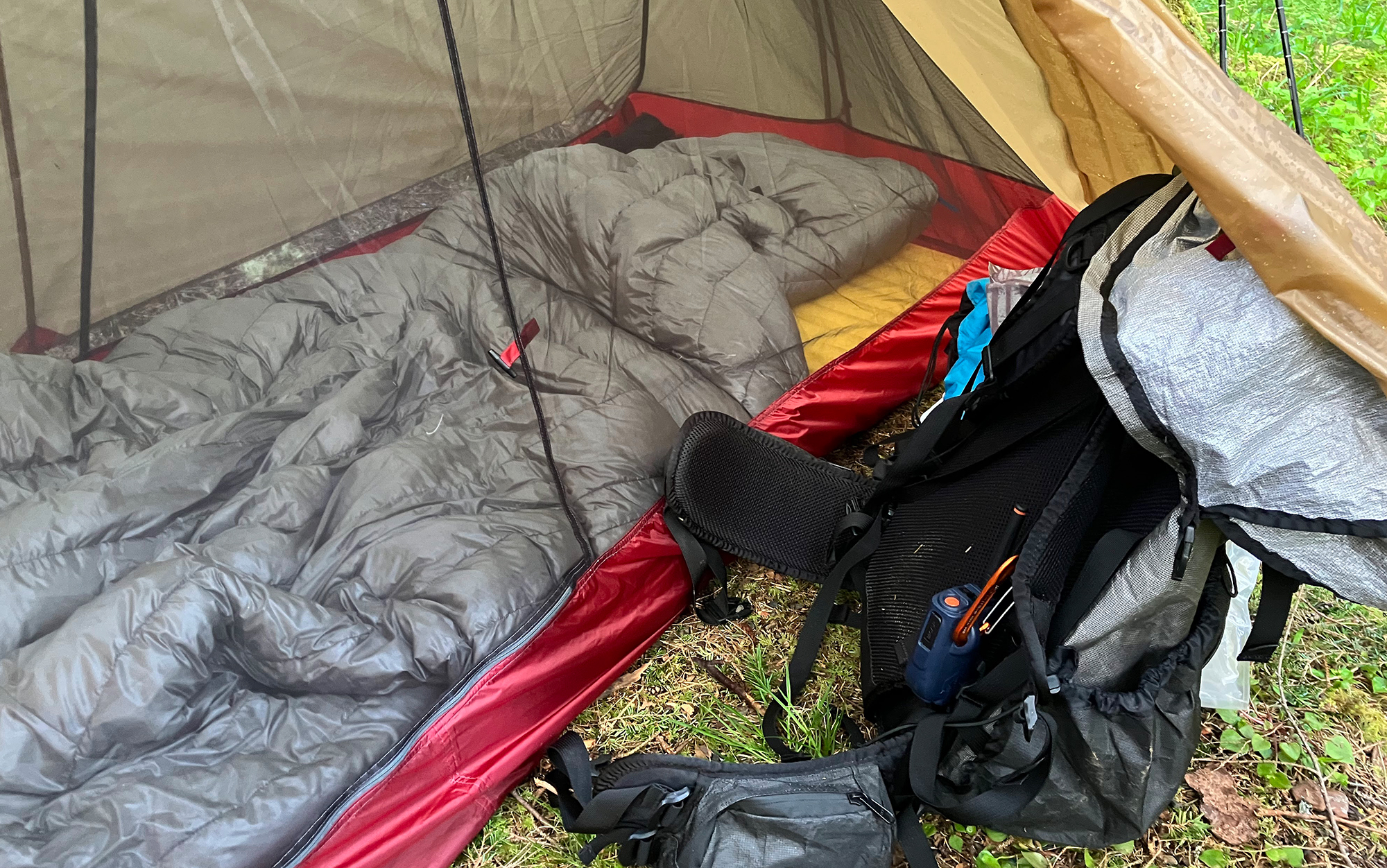
While some backpackers prefer the weight savings of a single-wall tent, the extreme condensation of the Oregon Coast showed the advantages of a double-wall setup. While the rest of our testing team was carefully packing up for the day, avoiding the soaked sides of their single-walled tents lest they unleash a rainstorm on their sleep system, the tester in the MSR Freelite 1 could sit up, bump their head on the mesh at the top of the tent, and stay dry.
There are only a few small quibbles with this tent. One is the door: It’s on the small side compared to the rest of our field, forcing our tallest tester (5 feet, 10 inches) to pretzel her limbs more than she would have liked when getting out. The included stakes (needle stakes) are also lower quality compared to other options in the MSR arsenal. Consider upgrading to either the lightweight MSR Carbon Cores or the MSR Groundhog Minis, which have great holding power.
Best Freestanding: Slingfin Portal
Buy the 1-Person Model
Buy the 2-Person Model
Buy the 3-Person Model
Two-person model tested in the Goat Rocks Wilderness by Ashley Thess, Adam Tycaster, Patrice “Steady” La Vigne, Sven “Magic” Anderson
Report Card
- Ease of Setup: 4.5
- Interior Living Space: 4.8
- Protection: 4
- Value: 3.3
- Measured Weight of the 2-Person Model: 3 pounds, 3 ounces (two ounces less than advertised)
- PFAS free in 2025
Key Features
- Max Head Height: 41 inches high (1P), 44 inches (2P)
- Doors: One door (1P), two doors (2P)
- Materials: Ripstop nylon
- Warranty: Limited lifetime
- Price: $490 (1P), $560 (2P)
Pros
- Great interior space (and pockets)
- Easy to achieve a basic setup
- Multiple ways to make your setup more storm worthy
Cons
- Expensive
- Heavy compared to other models we looked at
At first glance, the Slingfin looks like any other freestanding backpacking tent. Two poles crisscross and connect in at the tent corners. Clip up the body, secure the fly, and you’re done. But while you can absolutely stop there in your set up (and several of our testers did, more on that below), you can also go through any number of additional steps to make an even more bombproof setup for those times when you expect to encounter rough weather.

Ashley Thess
Our third night testing in the Goat Rocks Wilderness we got the opportunity to test some tents on a completely exposed, hard, non-stakeable ridge. Tycaster, the tester for the Slingfin that night, was not able to utilize a number of the additional options for creating a taut setup with this tent. Nonetheless, while other testers that night reported heavy winds pushing the walls of their tents inward, Tycaster — who did not even get his vestibule fully staked out — experienced no compromise of the tent structure itself.
So that’s what you get with the Portal when you don’t do anything. But in addition to the guylines (attached at the same spot on the rainfly as the pole clips for additional structural integrity), tensioners within the tent allow you to reduce slack without even getting out of your sleeping bag. Unusually for a freestanding tent, you can integrate your trekking poles into the design (at the midpoint on the doors), to add additional structure. You can even purchase more robust poles for this tent, for high-wind environments.
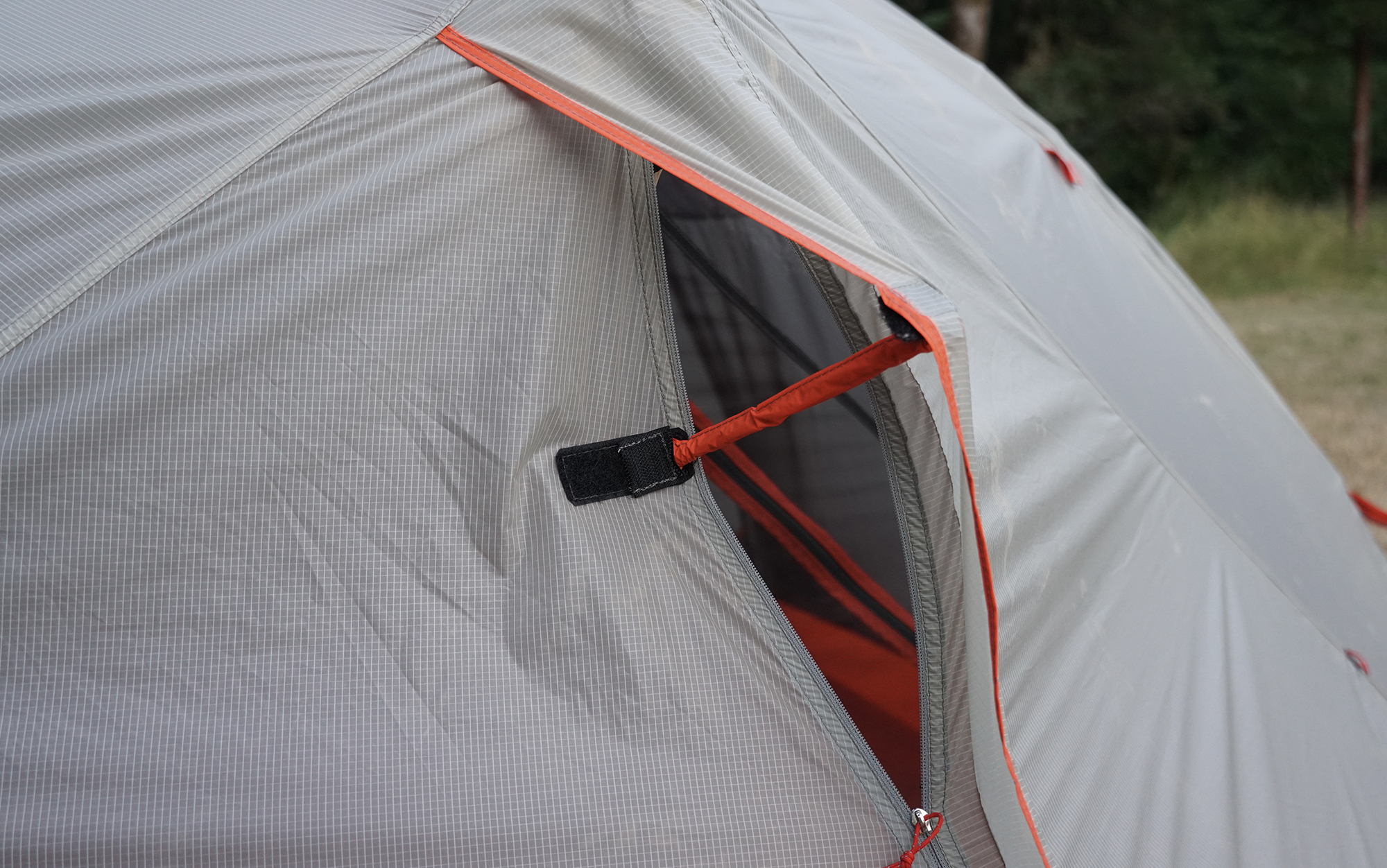
Alex Robinson
All this makes the Slingfin Portal one of the more interesting backpacking tents that we’ve looked at. It’s an appropriate choice for a beginner just getting started with multi-day trips. It’s also a great choice for experienced backpackers that want a lightweight tent that can perform in multiple environments.

Sven Anderson
There were also user-friendly features on the inside of the tent. Pocket-enthusiast Steady told me, “There were almost too many pockets! I counted two gear lofts, two pockets on each side at the head end, and one large pocket at the feet.” Multiple testers also noted the comparatively high peak interior height, which was 44 inches (nearly 4 feet). Better yet: This tent easily passed our Two Dudes in a Tent test, making it a real option for non-romantic hiking partners.
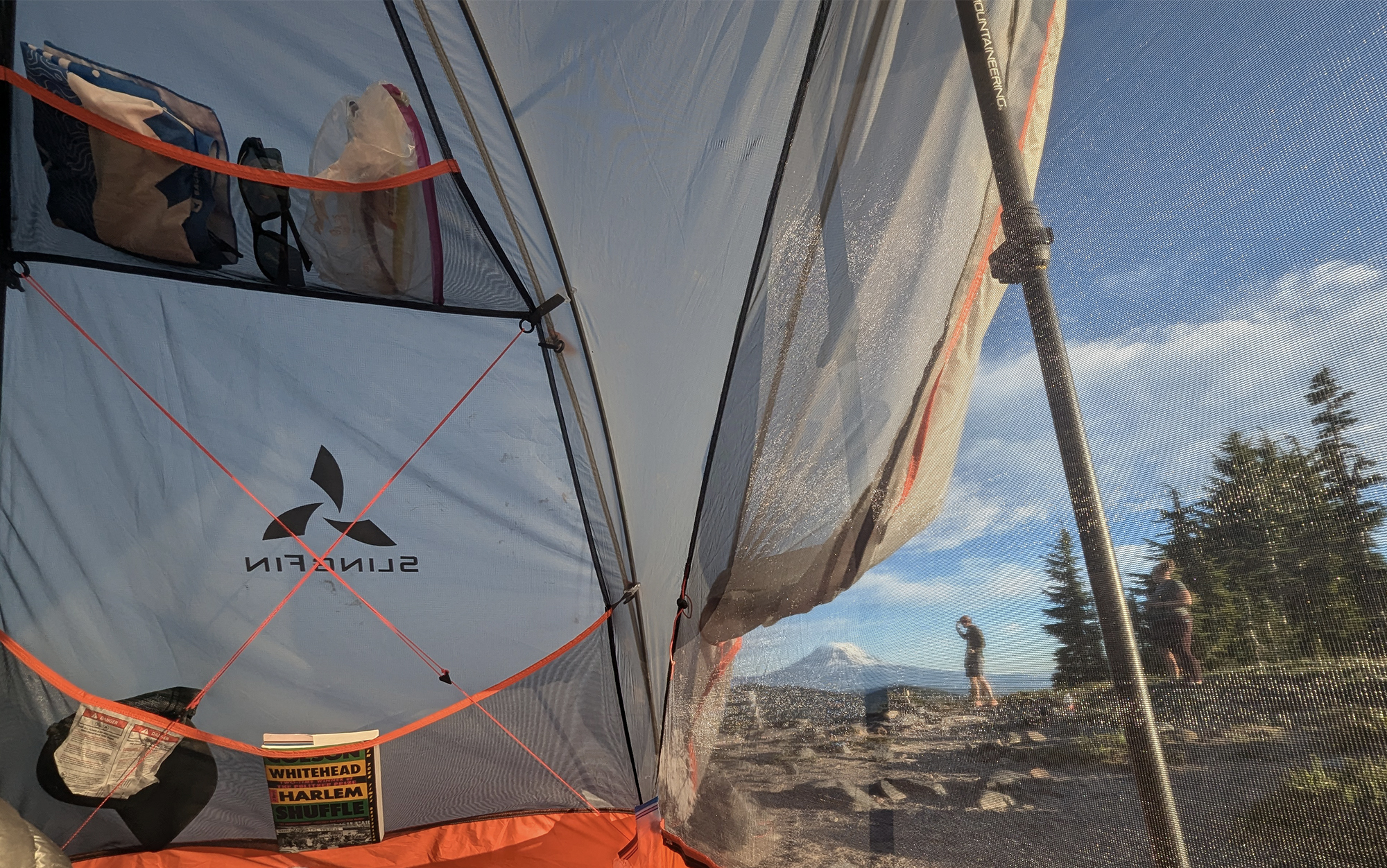
Adam Tycaster
So what’s the bad with this tent? First off, it’s both a little pricier and a little heavier than other models that Outdoor Life has tested as part of its backpacking gear test series. But in this case, the benefits of this tent — particularly for individuals who expect to camp in exposed locations — outweighs these issues. And compared to the MSR Hubba Hubba or Nemo Dagger — its similarly priced bombproof competitors — it is about a pound lighter.
Big Agnes Tiger Wall
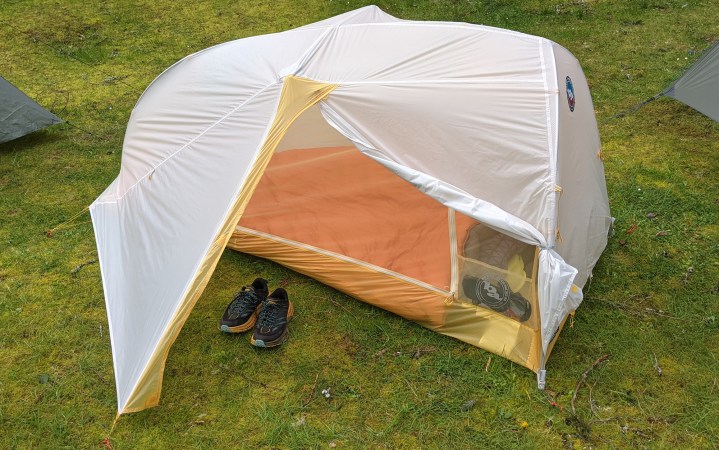
Buy the 1-Person Model
Buy the 2-Person Model
Buy the 3-Person Model
One-person model tested on the Oregon Coast Trail by Patrice “Steady” La Vigne with additional input by Laura “Chop Chop” Lancaster
Report Card
- Ease of Setup: 5
- Interior Living Space: 4
- Protection: 4
- Value: 3.5
- Measured Weight of the 1-Person Model: 2 pounds, 2 ounces (same as advertised weight)
- PFAS free in 2025
Key Features
- Max Head Height: 39 inches high (1P & 2P), 42 inches (3P)
- Doors: One door (1P), two doors (2P & 3P)
- Materials: Ripstop nylon
- Warranty: Limited lifetime
- Price: $400 (1P), $450 (2P), $500 (3P)
Pros
- Very similar to our best overall pick, the MSR Freelite
- Comparatively spacious floor space
Cons
- Heavier than other picks on this list
While testers on our Oregon Coast Trail testing trip raved about the MSR Freelite’s ease of setup and light weight, they were equally enthusiastic about the Big Agnes Tiger Wall. This one is just as easy to set up, with a hair more interior space across its lineup of sizes. But, given the increase in floor space isn’t reflected by an increase in head height, the bump up in weight doesn’t quite make it worth it by our estimations. But if you find that you tend to collapse the sides of the bathtub floor in the more narrow MSR Freelite, then this one is certainly worth a look.
Mountain Hardwear Nimbus UL
Buy the 1-Person Model
Buy the 2-Person Model
Two-person model tested in the Goat Rocks Wilderness by Patrice “Steady” La Vigne, Adam Tycaster, Ashley Thess with additional input by Laura “Chop Chop” Lancaster
Report Card
- Ease of Setup: 4.7
- Interior Living Space: 3
- Protection: 3.7
- Value: 3.3
- Measured Weight of the 2-Person Model: 2 pounds, 3.7 ounces (0.9 ounces less than advertised)
- PFAS free
Key Features
- Max Head Height: 38 inches high (1P), 41 inches (2P)
- Doors: One door (1P & 2P)
- Materials: Ripstop nylon
- Warranty: Limited lifetime
- Price: $400 (1P), $420 (2P)
Pros
- One of the lightest non-trekking pole tents we’ve tested
- Easy to set up
Cons
- Front entry was not popular with testers
- 2-person model was not large enough for two people
I checked out the one-person version of this tent as part of my scouting for the second annual OL backpacking gear test and came away impressed. It set up fast and was lightweight with a small packed size (essential when you’re carrying the Palante Desert, one of the best ultralight backpacks). It wasn’t the most home-like tent I had ever used, but it felt safe and secure and, to be honest, I don’t like to spend time in my tent, anyway.
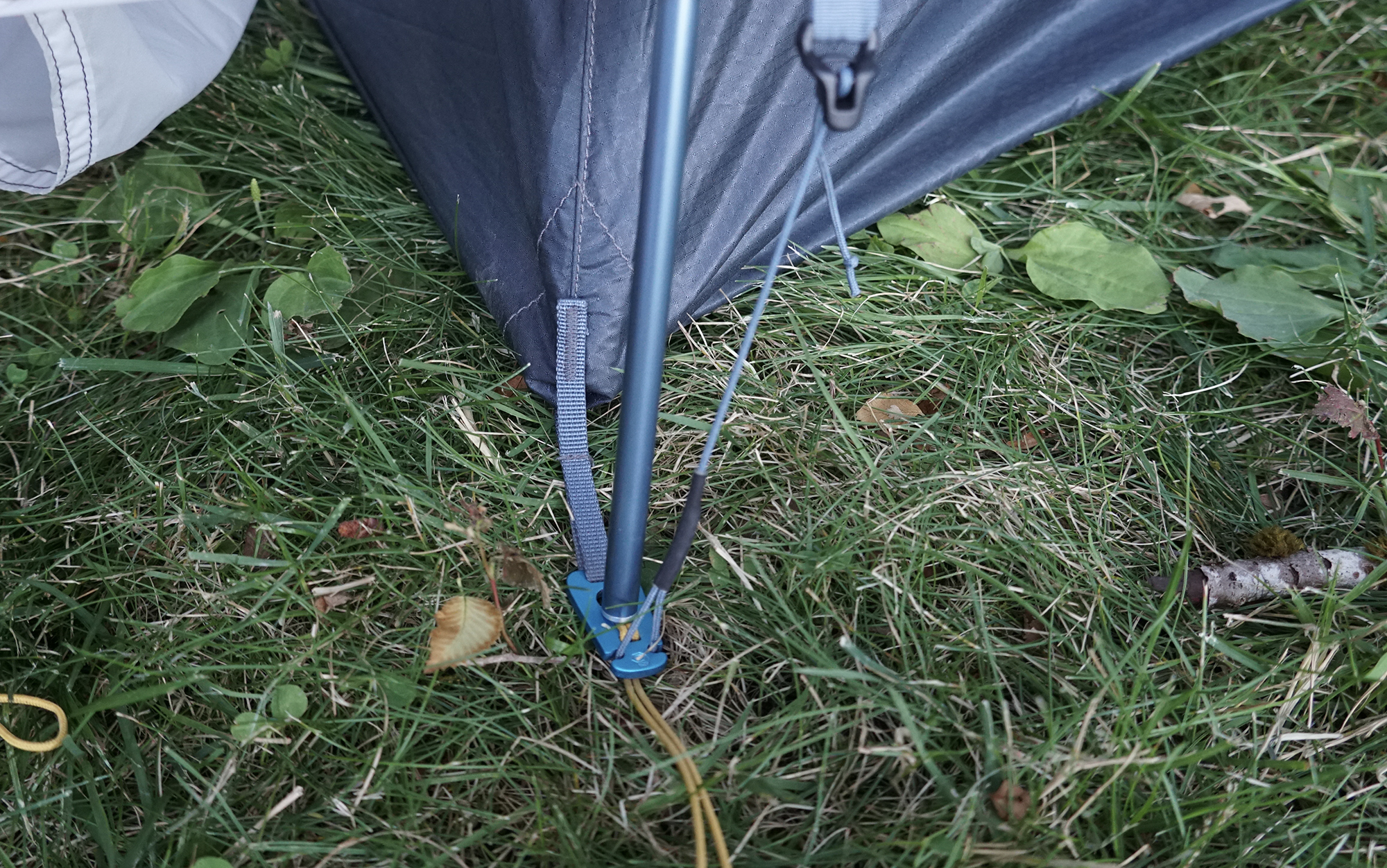
Alex Robinson
The tester panel for the backpacking gear test used the two-person version of the Mountain Hardwear Nimbus. Let’s start with the bad: for a two person tent, they were not impressed by the interior space it provided, with multiple testers noting that it felt cramped and they would not want to share it with a second person. When we ran our Two Dudes in a Tent test on this one, it was the only tent that our two gal testers told us was too small to use. (Tycaster, our tallest tester, did like the two-person for just himself.) Testers were similarly nonplussed by the front entry door. While it does provide some weight savings, it cuts the number of possible vestibules down from two to one. It also means that you enter the tent at the top of your sleeping area, which plenty of people find awkward.
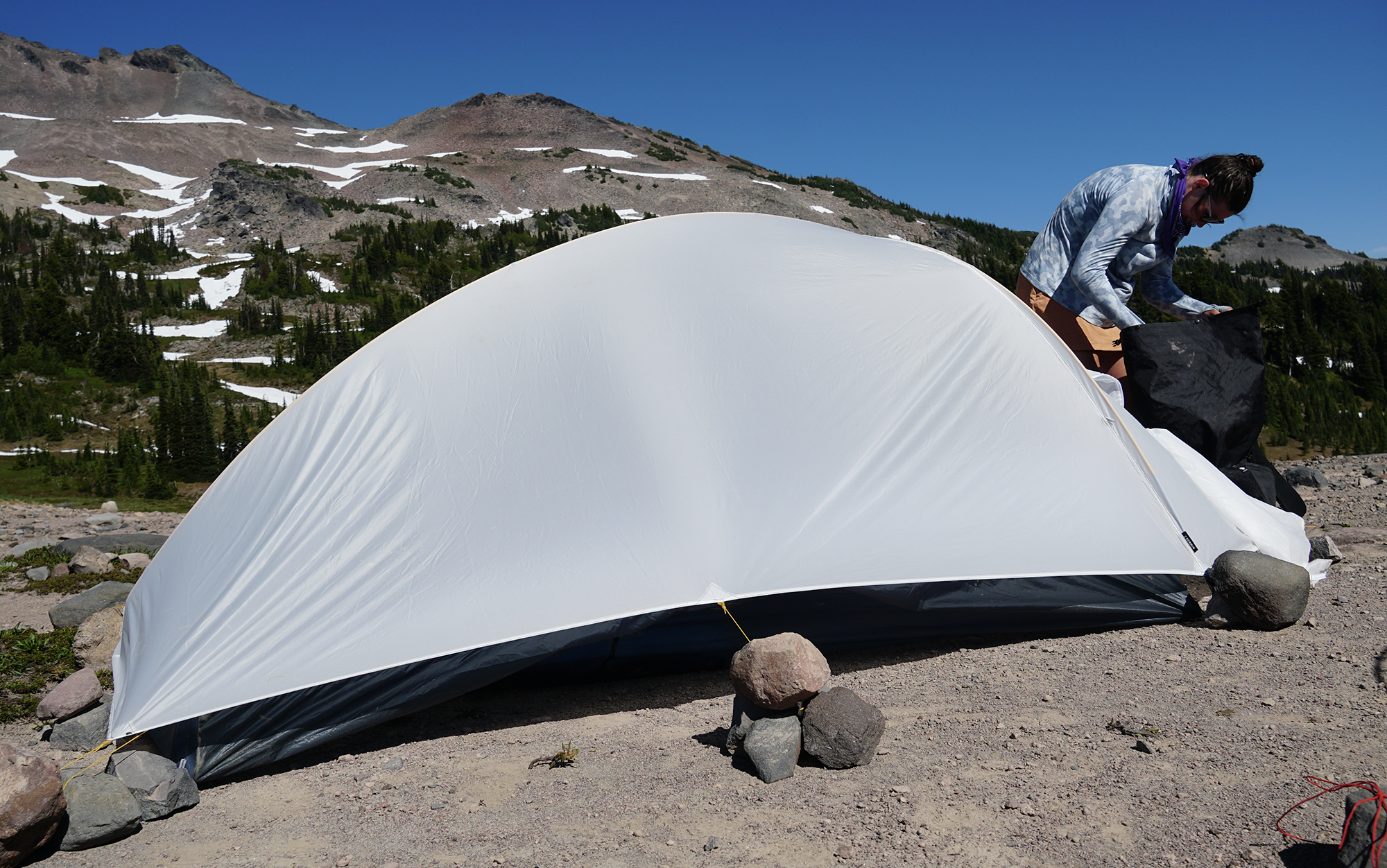
Alex Robinson
But testers did appreciate how easy it was to set up and take this down (no instructions needed for this group), especially compared to the trekking pole and other non-freestanding tents we looked at. Steady mentioned that, when securing the rainfly to the main body, “the hooks were so small, they were a little difficult to secure without effort.” While this semi-freestanding tent does stay up without staking down, Thess noted that while she was testing the tent, on the third night, a lack of stakes meant she was missing out on important real estate inside the tent. She also reported that the tent, even when fully staked out, flapped around substantially in heavy winds. This one is a better bet for backpackers willing to hike a few miles past that ridgeline to reach the safety of the trees.
One characteristic of this tent that testers were torn on was the white fabric. It tended to pick up dirt easily, but also made the tent more visible in low light conditions.
NEMO Hornet OSMO
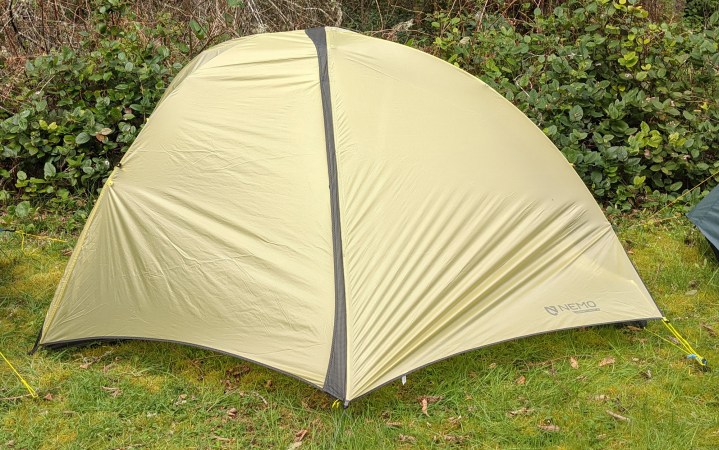
Buy the 1-Person Model
Buy the 2-Person Model
Buy the 3-Person Model
One-person model tested on the Oregon Coast Trail with input from Laura “Chop Chop” Lancaster
Report Card
- Ease of Setup: 5
- Interior Living Space: 3
- Protection: 4
- Value: 4
- Measured Weight of the One-Person Model: 2 pounds, 4 ounces (same as advertised weight)
- PFAS free in 2025
Key Features
- Max Head Height: 39 inches high (1P & 2P), 44 inches (3P)
- Doors: One door (1P), two doors (2P & 3P)
- Materials: Ripstop nylon, OSMO
- Warranty: Limited lifetime
- Price: $400 (1P), $430 (2P), $550 (3P)
Pros
Cons
- Heaviest freestanding tent we looked at
In recent years there’s been growing awareness that what goes into creating these practically weightless waterproof tent fabrics isn’t always great for the environment. If this is starting to weigh on you (it’s starting to weigh on us), then the NEMO OSMO series is one to seriously consider.
NEMO is one of the backpacking gear companies leading the charge in creating more environmentally sustainable fabrics and processes. Their OSMO tent fabric is made from 100 percent recycled material (a composite of polyester and nylon) and achieves an impressive water repellency without the use of PFAS — and it’s been that way since 2022. Like other gear manufacturers, they’ve been auditing and testing every detail in their line to uncover PFAS and make specification changes as needed.
The NEMO Hornet OSMO is a freestanding tent that holds its own in the ultralight arena. It was just a couple of ounces heavier than the other freestanding tents we looked at (the Big Agnes Tiger Wall UL and MSR Freelite), with similar interior space and ease of setup. If you’re looking to reduce your impact on the environment, this is a great option that will keep your backpacking kit ultralight.
Big Agnes Fly Creek UL
Buy the 1-Person Model
Buy the 2-Person Model
Two-person model tested in the Goat Rocks Wilderness by Alex Robinson, Adam Tycaster, and Sven “Magic” Anderson
Report Card
- Ease of Setup: 4
- Interior Living Space: 2.3
- Protection: 3
- Value: 4.3
- Measured Weight of the Two-Person Model: 2 pounds, 4.7 ounces (.3 ounces less than advertised)
- PFAS free in 2025
Key Features
- Max Head Height: 40 inches high (1P), 42 inches (2P)
- Doors: One door (1P & 2P)
- Materials: Ripstop nylon
- Warranty: Limited lifetime
- Price: $370 (1P), $400 (2P)
Pros
- Less expensive than other tents on this list
Cons
- Heavier than other tents we looked at (although still very lightweight)
- Front entry can be more awkward to get into
The Big Agnes Fly Creek is a similar design to the Mountain Hardwear Nimbus, and testers’ feedback on this tent reflected as such. The front-end entry was frustrating, but setup and takedown was easy enough. Despite the tent coming in at a lower price point than the Nimbus, testers rated it less favorably, including the tester, Tycaster, that used both tents. He and Magic both noted that the vestibule was small and that the interior was oddly claustrophobic with the sides tending to sag. “The interior felt like a coffin,” said Tycaster. While he was our tallest tester, these are not the results you want for a two person tent. It’s worth noting that, in our Two Dudes in a Tent test, testers reported that two women can fit into the two-person version just fine.
Best Backpacking Tents: Trekking Pole and Non-Freestanding Tents
Best Overall: Gossamer Gear The ONE and The TWO
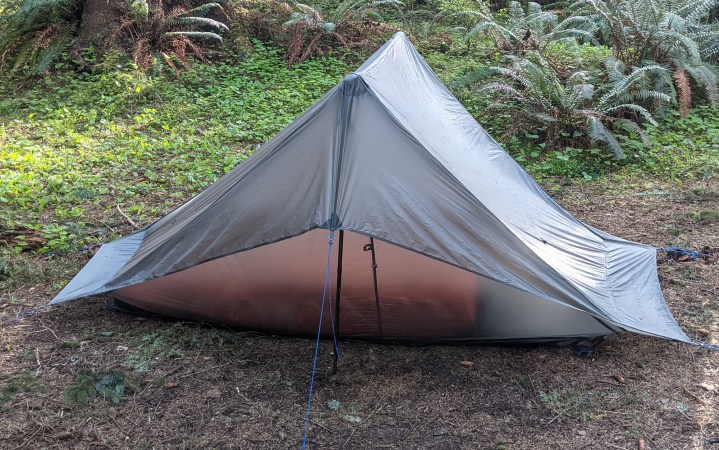
Buy the 1-Person Model
Buy the 2-Person Model
One-person model tested on the Oregon Coast Trail by Diana Helmuth and Ashley Thess
Report Card
- Ease of Setup: 4
- Interior Living Space: 4.5
- Protection: 4
- Value: 5
- Measured Weight of the One-Person Model: 1 pound, 6.6 ounces (1.4 ounces less than advertised)
- PFAS free in 2025
Key Features
- Max Head Height: 45 inches (1P), 43 inches (2P)
- Doors: One door (1P), two doors (2P)
- Materials: Ripstop nylon
- Warranty: One year
- Price: $255 (1P), $320 (2P)
Pros
- Easy to set up
- Reasonably priced
- Good sized interior that felt homey to our testers
Cons
- Technically a smaller footprint than comparable models
The Gossamer Gear The One is the total package. It’s easy to set up, even for first-time ultralight tent users. It’s very light. It has enough head room to move around comfortably in the morning. The vestibule fit all our gear with room to spare. It packs up small. It even had an interior stow pocket for odds and ends like eyeglasses. Check. Check. Check.
Read Next: The Best Trekking Poles
But this is the real reason it won the top slot: The Gossamer Gear The One, more than any other tent in our test, just had that je ne sais quoi that we look for in our home on the trail. Our testers wanted to be in this tent at the end of the day and were happy to wake up in it in the morning — even our tallest tester at 5 feet, 10 inches. There was more wrangling to be the next tester for this tent than of any other we looked at.
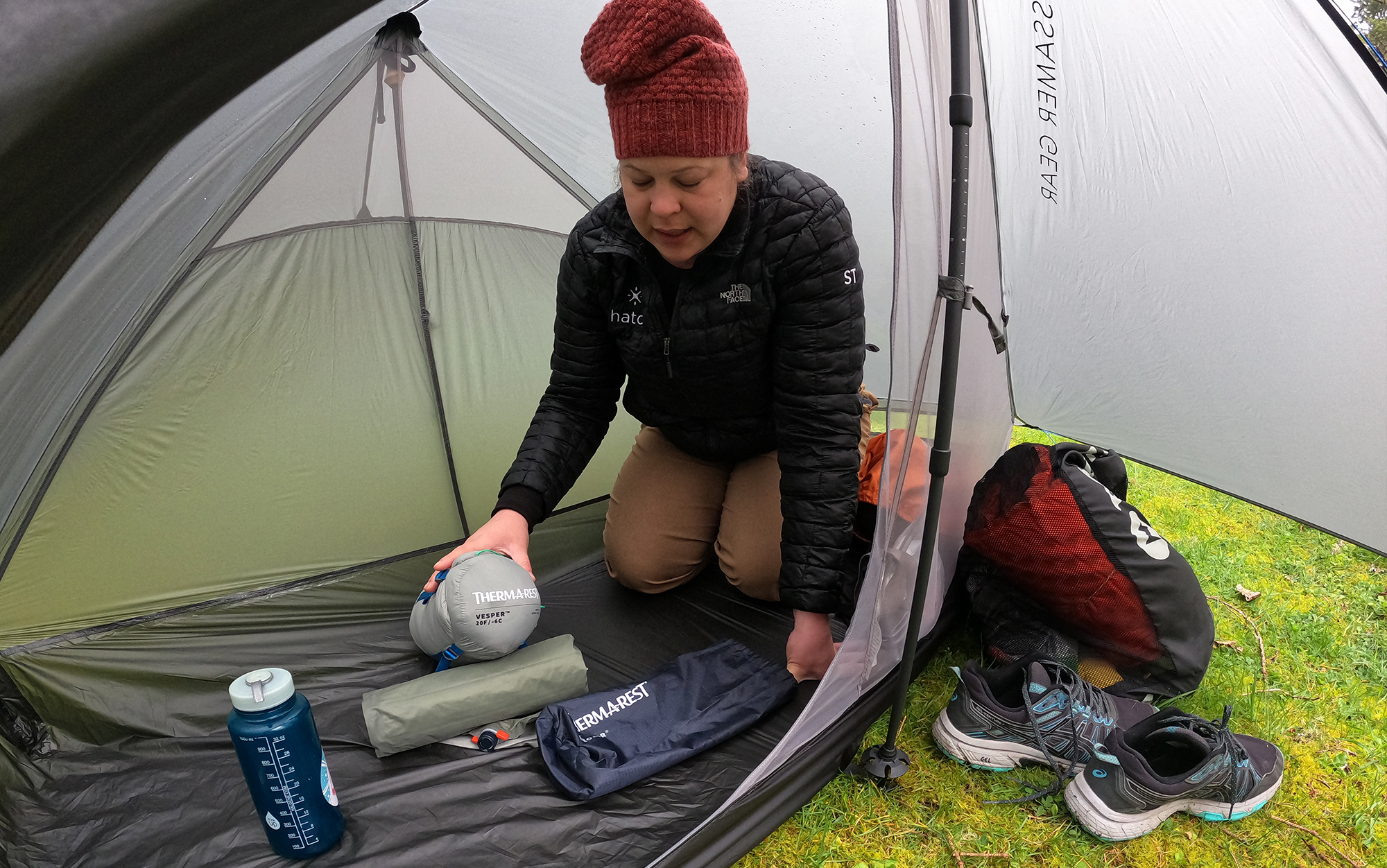
Both testers who took this tent out reported that they were able to figure out how to set up the tent without directions (something that was decidedly not true for all the ultralight tents in our test), even when they were comparably inexperienced with trekking-pole style tents. However, they both noted the lack of directions provided in the package — consider downloading these to your smartphone before heading out into the field.
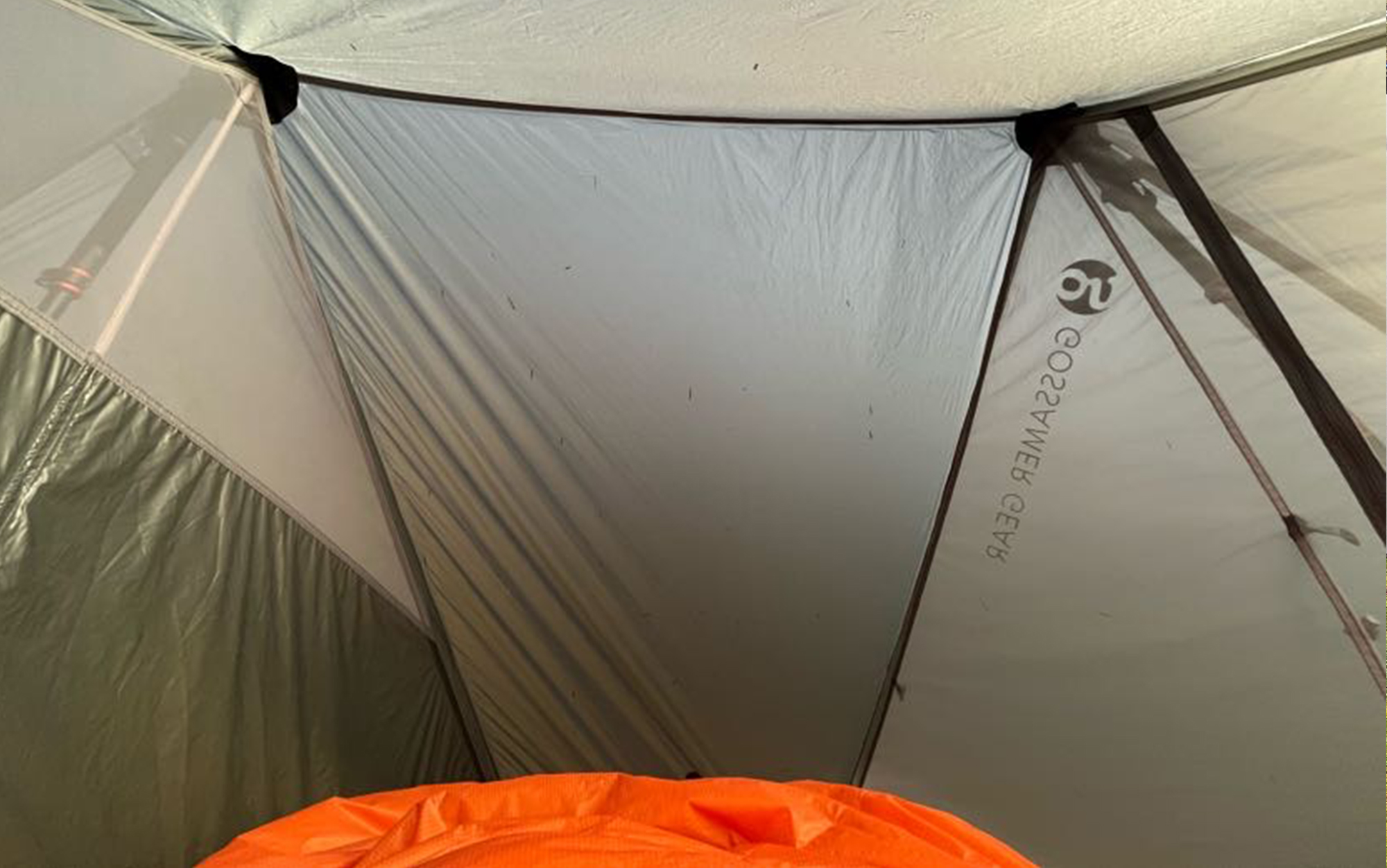
The only downside to this tent is that it requires two trekking poles to set up, making it less weight-conscious for backpackers who only carry one for tricky stream crossings or steep talus.
Best Upgrade: Seek Outside Sunlight
Buy the 2-Person Model
Tested in the Goat Rocks Wilderness by Alex Robinson, Adam Tycaster, Jac “Top Shelf” Mitchell, Laura “Chop Chop” Lancaster, and Diana Helmuth
Report Card
- Ease of Setup: 4
- Interior Living Space: 4.8
- Protection: 4.3
- Value: 3.8
- Measured Weight: 3 pounds, 2.5 ounces (includes optional carbon fiber poles, 3.1 ounces heavier than advertised)
- Did not hear back in time for the story’s publication
Key Features
- Max Head Height: 50 inches (2P)
- Doors: Two doors (2P)
- Materials: Ripstop nylon
- Warranty: Limited lifetime (also provides repair for a fee)
- Price: $450 (2P)
Pros
- Spacious
- Quality materials
- Easy setup (for a trekking pole tent)
- Made in the USA
Cons
- Expensive
- The optional carbon fiber poles confused testers
Another tent that shared the above Gossamer Gear’s design was the Seek Outside Sunlight. The testers for this tent were effusive in their praise. “Easiest trekking pole tent to set up I have ever experienced,” said Helmuth.

Alex Robinson
It was the only non-freestanding tent that was set up in the exposed alpine area on our third night of testing in the Goat Rocks Wilderness (the other three trekking-pole tents were set up among the trees). The tester, Top Shelf, reported that it stayed up fine, although there were some hiccups along the way given the less than ideal staking-out situation. “It felt homey, spacious, and super storm-worthy,” she noted. Robinson, who tested it on the final night when we were camped in muggy conditions near a pond, reported no condensation.
While the Seek Outside Sunlight is noticeably more expensive than the Gossamer Gear The Two, which has a similar silhouette, there are several reasons to choose this version. First off, this tent has incredible interior space, by far the most of any two-person tent we looked at. Two large and tall individuals will easily fit inside this tent without feeling overcrowded. It’s also made from 30D nylon, which should have a longer lifespan than the Gossamer Gear’s 10D. I also appreciated a unique feature, where a sliding toggle on the middle edge of each vestibule allowed you to easily access the zipped mesh door. “So simple and fun,” noted Helmuth. “Why aren’t all tents like this?”
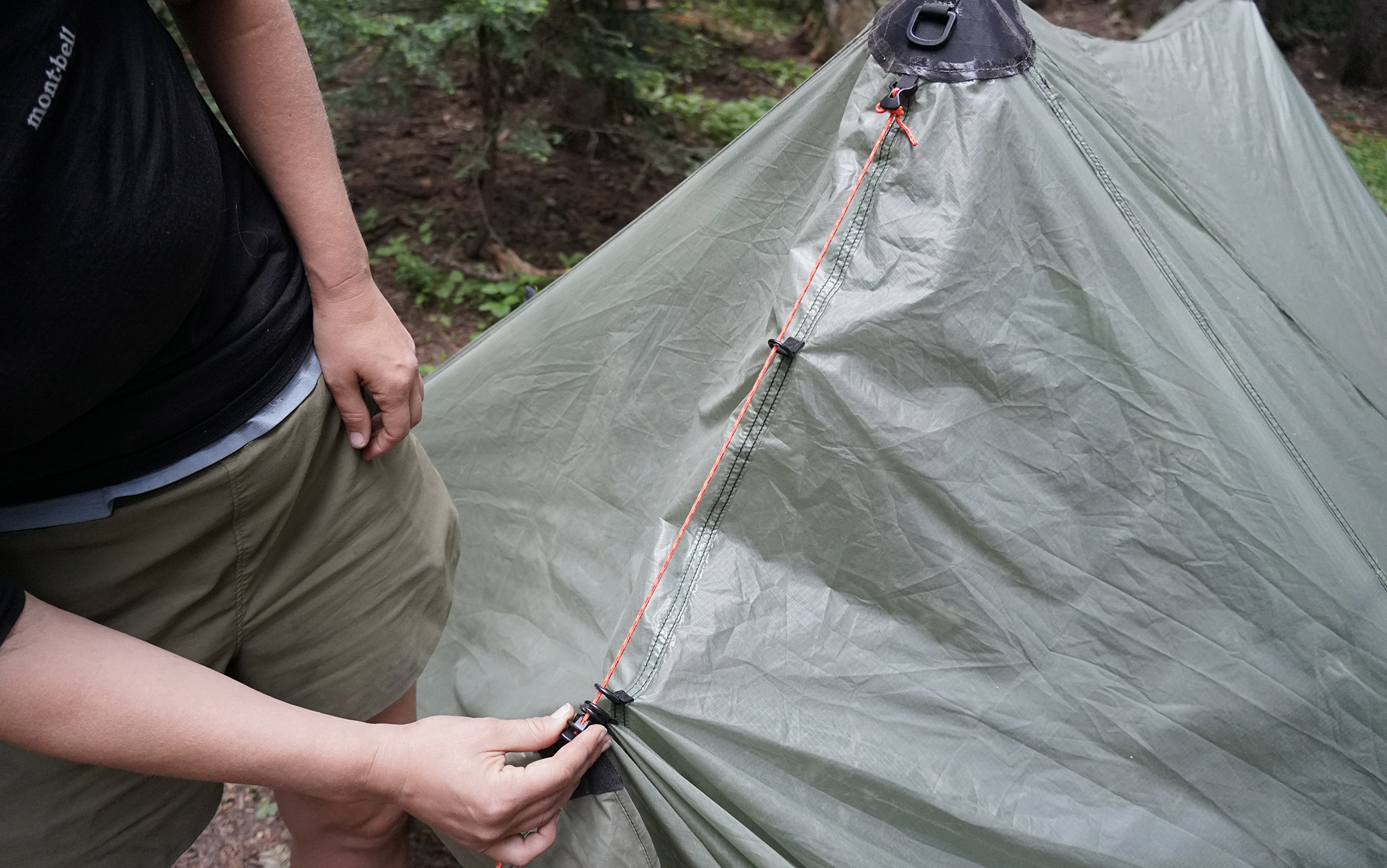
Alex Robinson
One aspect of this tent that stymied our testers was the optional carbon fiber poles, which are sold as an additional add-on. These came in four separate sections, with no color coding or other indicators to show you how best to assemble them. Almost everyone eventually figured it out, but the consensus was that trekking poles were much easier to use.
Best Design: Durston X-Mid
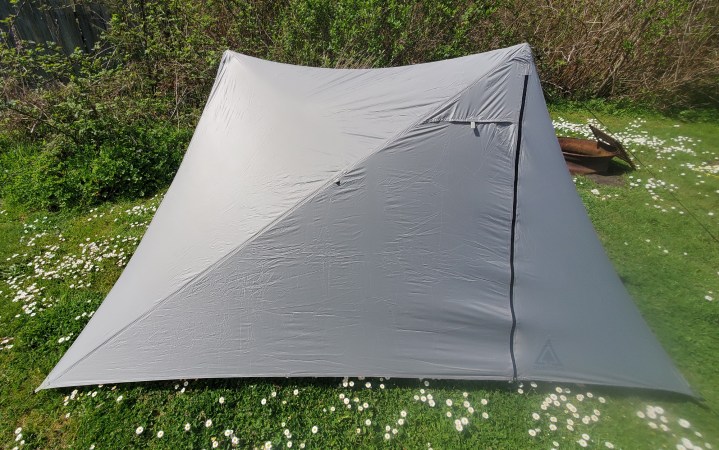
Buy the 1-Person Model
Buy the 2-Person Model
One-person model tested on the Oregon Coast Trail by Jac “Top Shelf” Mitchell with input by Laura “Chop Chop” Lancaster and Patrice “Steady” La Vigne
Report Card
- Ease of Setup: 4
- Interior Living Space: 3.5
- Protection: 4
- Value: 5
- Measured Weight of the One-Person Model: 2 pounds, 1 ounce (2.2 ounces heavier than advertised)
- PFAS free
Key Features
- Max Head Height: 46 inches (2P)
- Doors: Two doors (1P & 2P)
- Materials: Polyester
- Warranty: Two years
- Price: $234 (1P), $270 (2P)
- Also available as a one-pound DCF tent
Pros
- Excellent geometry makes for a stable set up
- Most vestibule space of anything we looked at
- Very affordably priced
Cons
- Not as light as some other ultralight tents in our test (DCF version is much more expensive)
- You’ll want to grab some different stakes (included options weren’t the best)
When set up correctly, the Durston X-Mid 1 had some of the best geometry of any tent our testers had ever tried. It’s fully taut and secure against wind and rain, not sagging in the slightest when serious moisture sets in. Even when it wasn’t set up perfectly (a loose stake popped on my first night in this tent), it was shockingly stable: I didn’t even notice until morning.
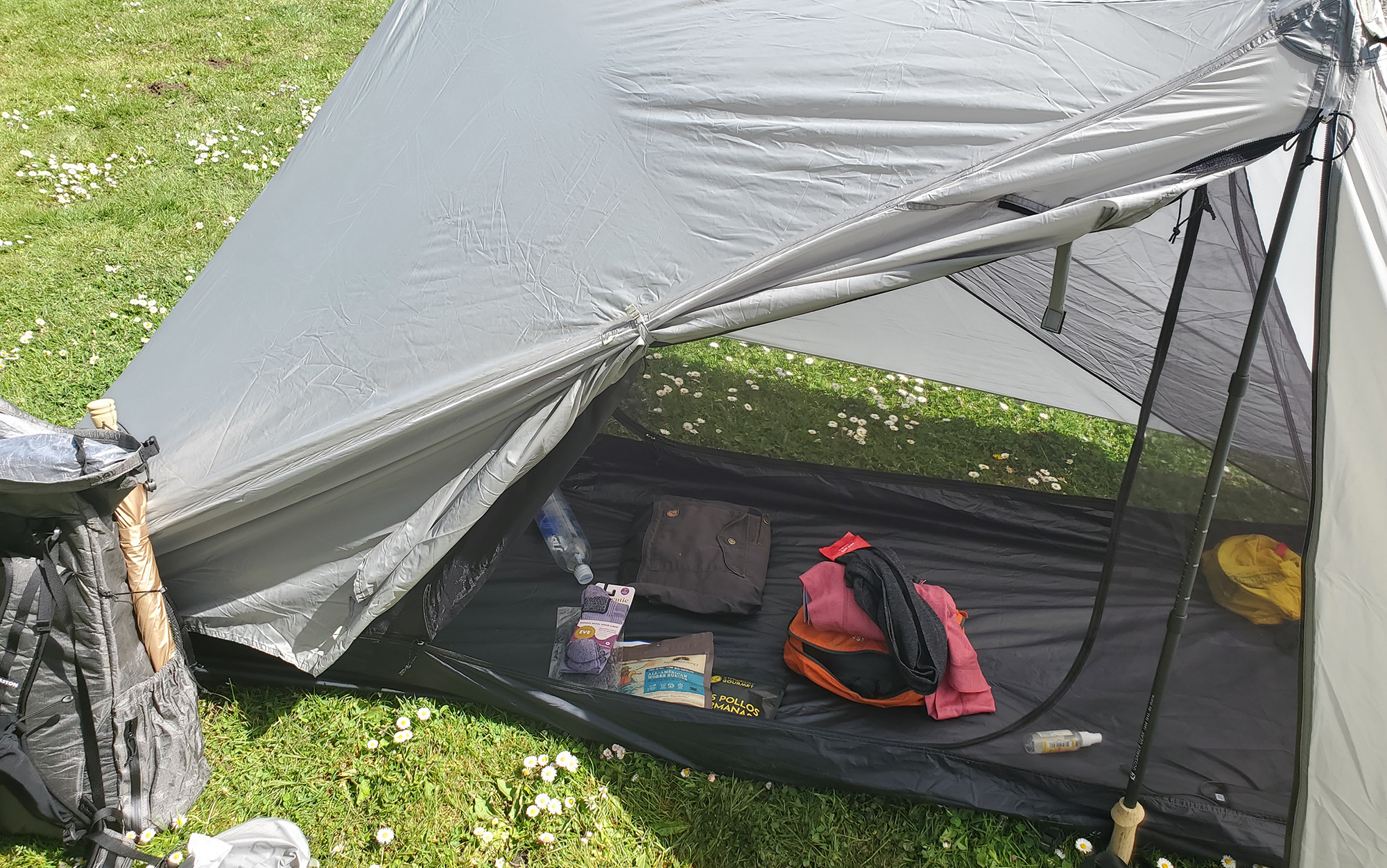
Even though the rainfly was soaked from the unrelenting condensation of the Oregon Coast, I was completely dry in this tent, thanks to its double-wall setup. What makes the Durston X-Mid 1’s double-wall design especially unique is that it was designed to be pitched fly first — no additional groundsheet required. This is such a preferable order of operations in inclement weather that I hope this becomes the norm in the future. Our testers also noticed that the pitch had steeper walls than was typical, which maximizes livability — even if it doesn’t technically give you more floor space.
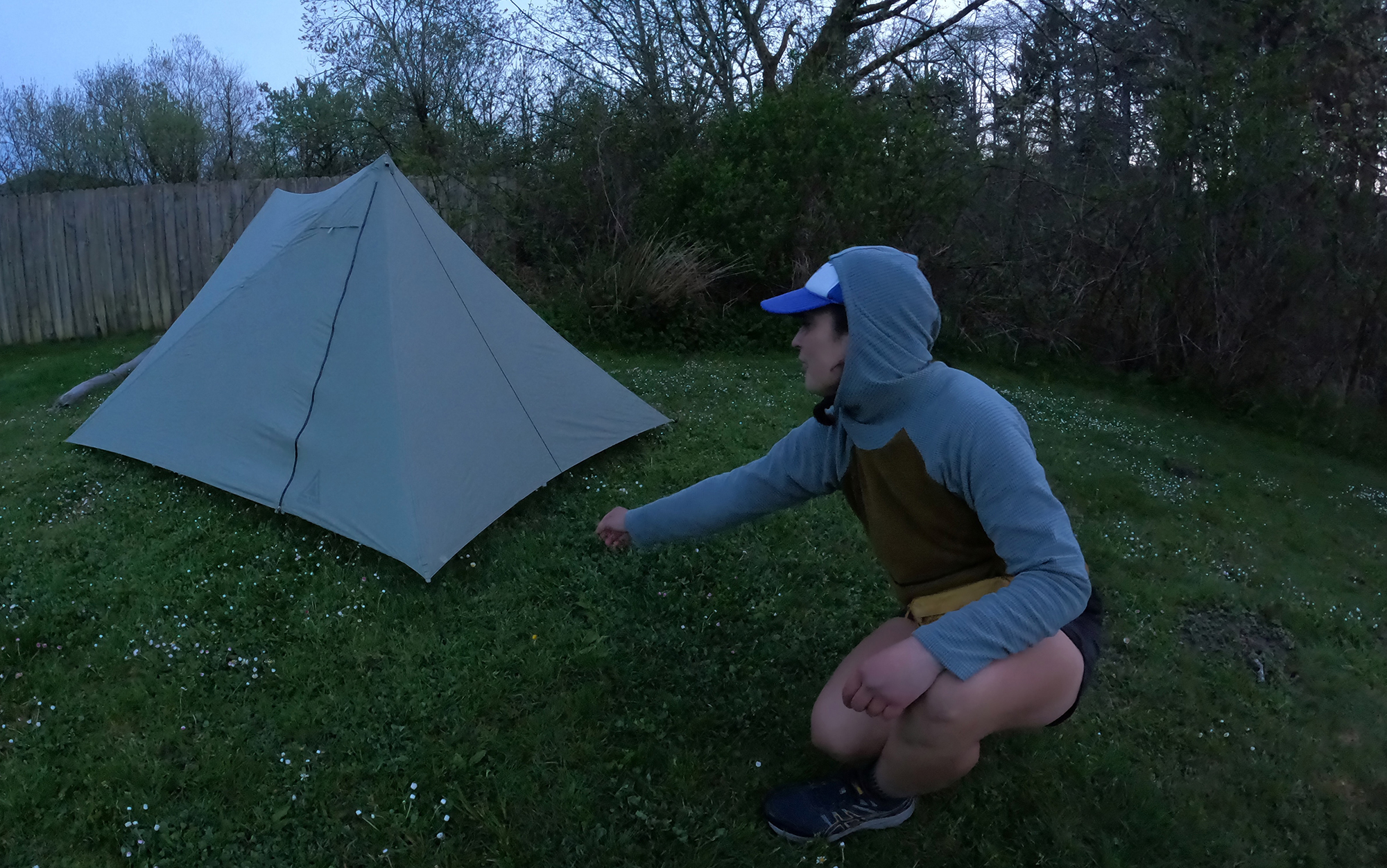
The Durston X-Mid 1 even had two doors and two vestibules, unique among one-person tents to our knowledge. Even though it’s a similar weight to the other double-wall ultralight tents we looked at, the Durston X-Mid 1 is (at the time of this review) about $200 less expensive. Hiker trash: This one is a no-brainer.
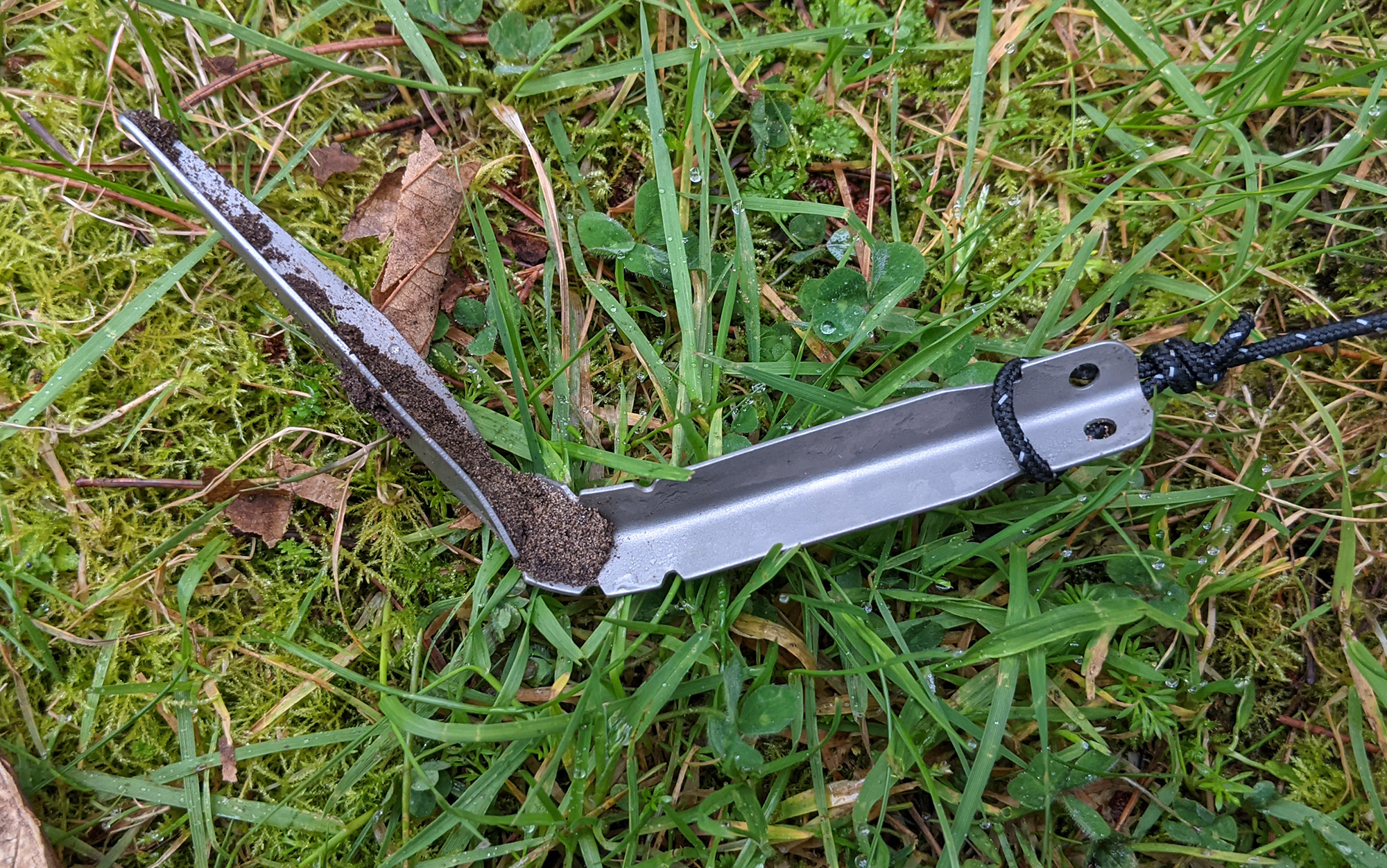
So what’s wrong with this tent? To start: It’s not your lightest option. For the same weight as the Durston X-Mid 1, you could get a fully freestanding tent. (Durston does offer a 1-pound version of this tent in DCF, but the price point for that is up there with some of the pricier ultralight tents.) Its setup also proved challenging for testers accustomed to freestanding tents. If this is your first trekking pole tent, give yourself some time and space to play around with perfecting the setup.
Read Next: Best Tent Stakes
Finally, you remember I mentioned a stake popped out the first night we used this tent? That stake had bent while being pushed into reasonably soft ground. I’d plan to replace them with one of the best tent stakes, with an eye toward MSR Groundhog minis or Big Agnes Dirt Daggers.
Read our full review, Durston X-Mid 1 Review: A Beginner-Friendly Ultralight Shelter.
Best for Groups: Seek Outside Cimarron
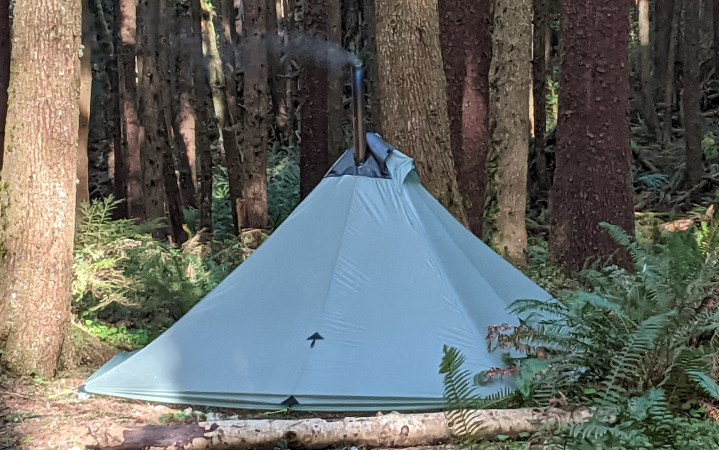
Buy the Tent Only
Buy the Tent & Stove Combo
Tested on the Oregon Coast Trail by Laura “Chop Chop” Lancaster
Report Card
- Ease of Setup: 5
- Interior Living Space: 5
- Protection: 4
- Value: 5
- Measured Weight: 3 pounds, 7 ounces (same as advertised weight)
- Did not hear back in time for the story’s publication
Key Features
- Max Head Height: 72 inches (4P)
- Doors: One door (4P)
- Materials: Ripstop nylon
- Warranty: Limited lifetime (also provides repair for a fee)
- Price: $465 (4P)
Pros
- Straight-forward set up
- Lightweight for its size
- Came with some the best tent stakes of any tent we looked at
- Option to pair with a lightweight titanium stove
Cons
- Huge footprint can make it hard to find a suitable pitch site
- No floor (option to purchase a floor if you do not plan to use the stove)
For a tent this spacious, the Seek Outside Cimarron is exceptionally easy to set up. The first step is to stake out the four corners of the tent, a task made easier by the long (almost 10 inches) twisted aluminum stakes. I was comfortable pounding these in with a rock and they held great. Then simply assemble the pole sections together at the lowest length setting, position it in the center of the tent, and adjust it up until it’s at its highest setting. Done. The only tricky part is that, like with the Seek Outside Sunlight, it can take a bit of trial and error to figure out how the pole sections best assemble together.
Seek Outside states that four people can sleep in this tent, and after experiencing it first-hand, my sense is that this is an understatement. Four individuals and all their gear would not be a tight squeeze in this tent. If the individuals are on the smaller side, you could probably squeeze in one or two more. During our testing trip along the Oregon Coast Trail, five of us fit comfortably chatting and eating in the tent at the end of the day. Unlike the other backpacking tents on this list, the version of this tent that I tested did not have a floor, and would not be a suitable choice for buggy environments; however, Seek Outside does sell a nest (essentially an inner tent which is suspended underneath the outer tent).
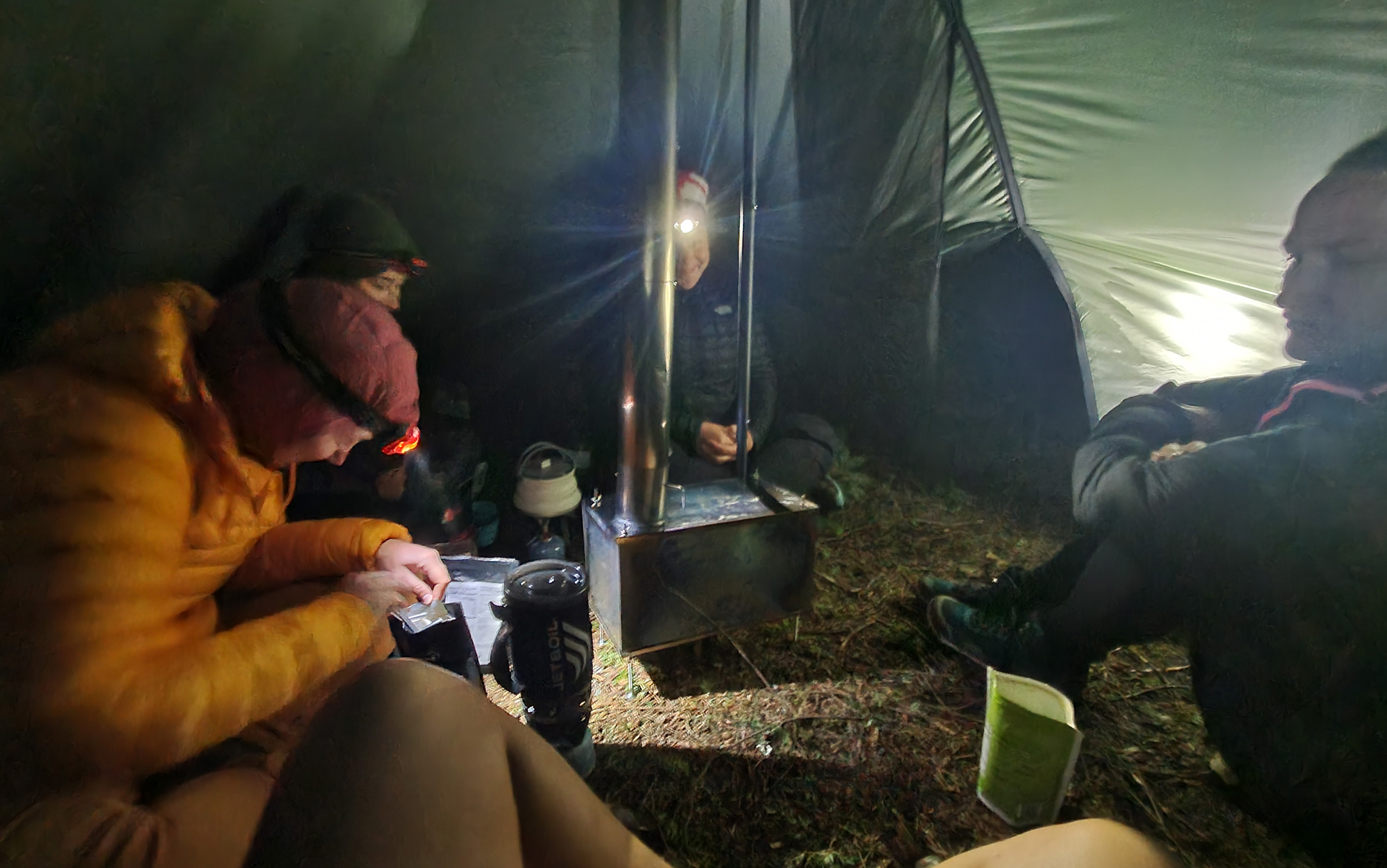
Something unique about the Seek Outside Cimarron is that it can be paired with a lightweight, collapsible, titanium stove. Like most backpackers, I’m typically boiling water for my morning coffee in the vestibule while warily eyeing the explicit all-caps instructions to not use a stove in the tent. So starting an actual wood-burning fire inside of this tent was pretty exciting. Having now experienced what a game-changer a hot tent can be in some of the questionable weather backpackers too-often end up in, this is one to keep in mind.
Read Next: The Best Hot Tents
It’s tough to find fault with this tent. Perhaps its biggest pitfall is that it can be a challenge to find a place for it. With the huge footprint and need to stake the tent down, you might spend more time searching for a spot to set up than actually setting up.
Six Moons Lunar
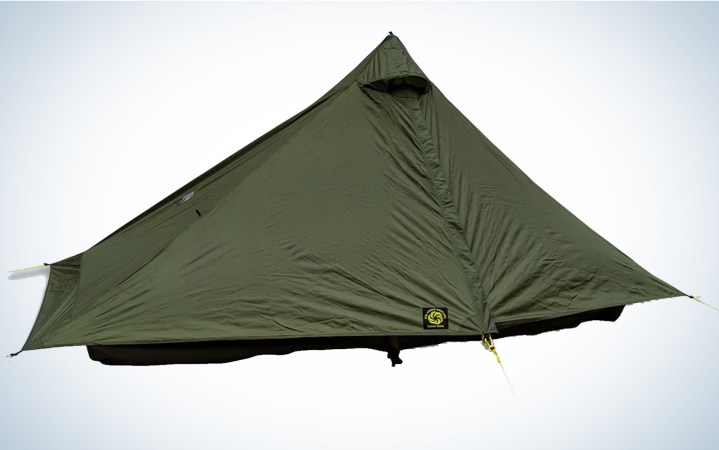
Buy the 1-Person Model
Buy the 2-Person Model
One-person model tested on the Oregon Coast Trail by Laura “Chop Chop” Lancaster
Report Card
- Ease of Setup: 4
- Interior Living Space: 3
- Protection: 4
- Value: 4
- Measured Weight of the One-Person Model: 1 pound, 12.9 ounces (weight includes stakes; not included in purchase price or advertised weight)
- PFAS free in 2025
Key Features
- Max Head Height: 49 inches (1P), 45 inches (2P)
- Doors: One door (1P), two doors (2P)
- Materials: Polyester
- Warranty: Limited lifetime
- Price: $260 (1P), $400 (2P)
Pros
- Easy to set up
- Ability to adjust the door guyline from inside the tent
- Affordable
- One person model needs only one trekking pole
Cons
- Low walls can be claustrophobic
Maybe you’re like me: You don’t typically use trekking poles while hiking, but you’ve been known to toss one into your pack for gnarly river crossings or for extra stability on steep, snowy terrain. But there’s no way you’d carry two just to use in a trekking pole setup — at that point you might as well just use a freestanding model.
The Six Moons Lunar Solo was one of the few ultralight tents in our test that used one trekking pole in its design rather than two. The result was a modified teepee structure that was surprisingly intuitive to set up. Despite having never used this tent, I was able to put it up in only a couple of minutes with no directions.
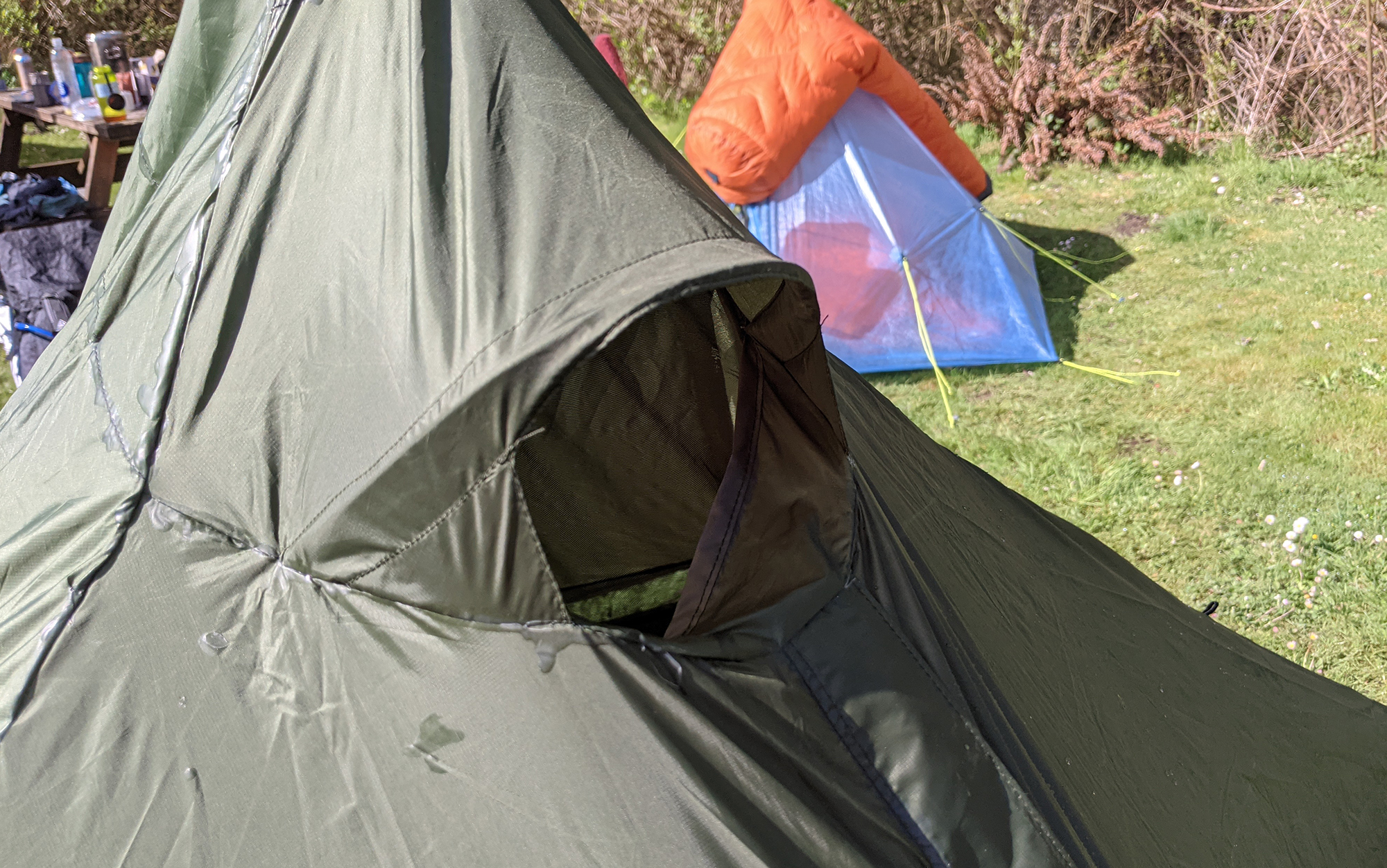
It also had a few details I appreciated. The first was a vent on the top of the tent. It didn’t help with the unrelenting fog of the Oregon Coast, but in drier climes it would reduce condensation buildup from exhaling inside your tent. It also had a tension adjustment for the rainfly door inside the tent, a thoughtful detail that I hadn’t seen before. This would allow you to get rid of excess slack (typically caused by wind or condensation) in the part of the tent covering your gear without having to get out of your tent.
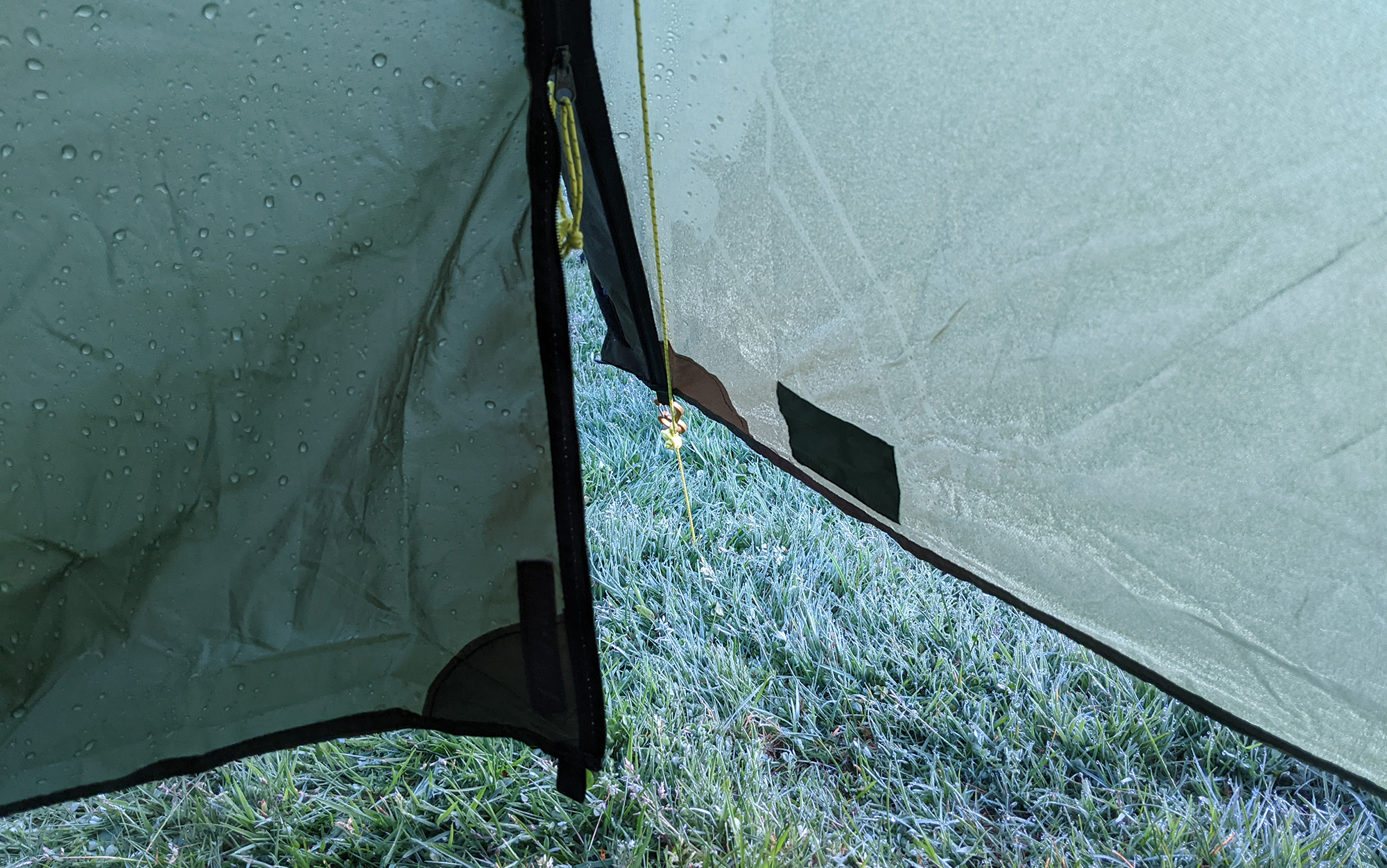
While the peak height of this tent is sufficient, I found it difficult to avoid bumping my head against the condensation-soaked tent walls in the morning. This was in part due to my site location: I was pitched on slightly uneven ground, which made it difficult to achieve the steeply sloped walls that would have been possible on flat ground.
While this tent is affordably priced, note that the price does not include stakes; you’ll need to purchase those separately.
Six Moon Designs Haven
Buy the 2-Person Model
Tested in the Goat Rocks Wilderness by Patrice “Steady” La Vigne, Sven “Magic” Anderson, Laura “Chop Chop” Lancaster, and Diana Helmuth
Report Card
- Ease of Setup: 1.8
- Interior Living Space: 4
- Protection: 3.8
- Value: 4.3
- Measured Weight: 2 pound, 10.5 ounces (weight includes stakes; not included in purchase price or advertised weight)
- PFAS free in 2025
Key Features
- Max Head Height: 45 inches
- Doors: Two doors
- Materials: Silnylon
- Warranty: Limited lifetime
- Price: $375 (2P)
Pros
- Versatile setup
- Easy to split the weight between two people
Cons
- Time-consuming initial setup
- A larger stuff stuff sack is needed to simplify subsequent setups
The Six Moon Designs Haven has a somewhat unique setup that maximizes versatility while keeping the weight down. Like with the Durston X-Mid, you pitch the rainfly first, and then hang the shelter beneath it. There are a few advantages to this design. In bad weather, it makes it a bit easier to keep the inside of the tent dry when taking down the tent. (And, unlike single-wall tents, it fares a bit better against condensation.) It also means that if you don’t expect to encounter significant bugs, you can simply leave the tent body home and choose to sleep under the tarp alone.
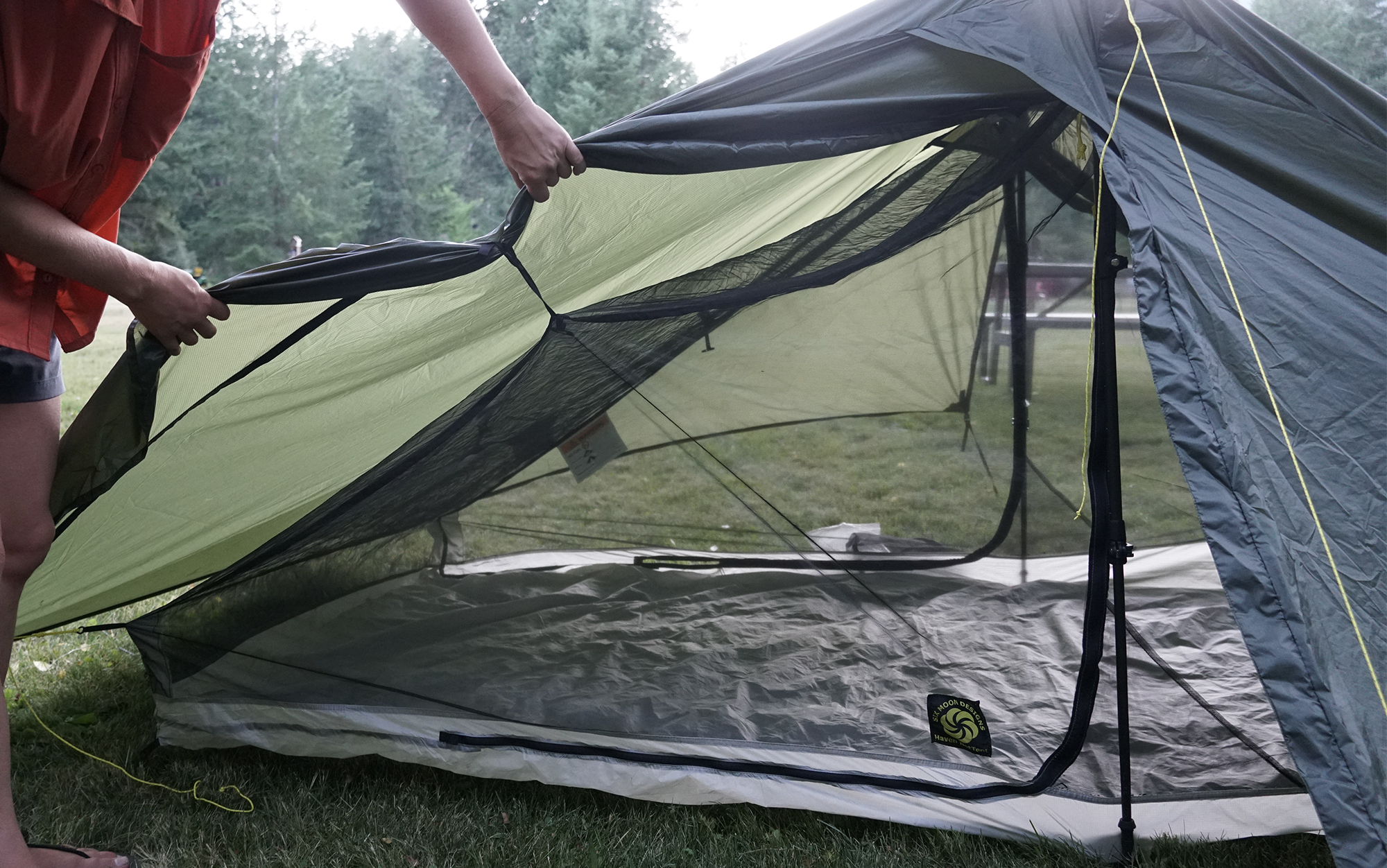
Alex Robinson
In practice, clipping the mesh tent body underneath the rainfly is a bit of a pain. “I’ve always hated the whole ‘set up the rainfly first’ because then you have to yoga pose under the rainfly to connect it to the tent body,” noted Steady, our first tester. Magic, who is hiking with Parkisnons, also noted that “the setup is very difficult,” ranking it a 2, his lowest score during our testing trip. Other testers expressed similar frustration, especially with correctly orienting the bug net to the rainfly body, which, at least in our version of the tent, was not color coded. Some of this might have been minimized tester to tester by simply leaving the bug net attached; however, because the bug net and the rain fly each have their own dedicated stuff sack, there wasn’t an easy way to pack them away together. I would recommend that anyone looking at this tent also purchase a larger stuff sack to simplify setup in those situations where you want to leave the two halves connected.
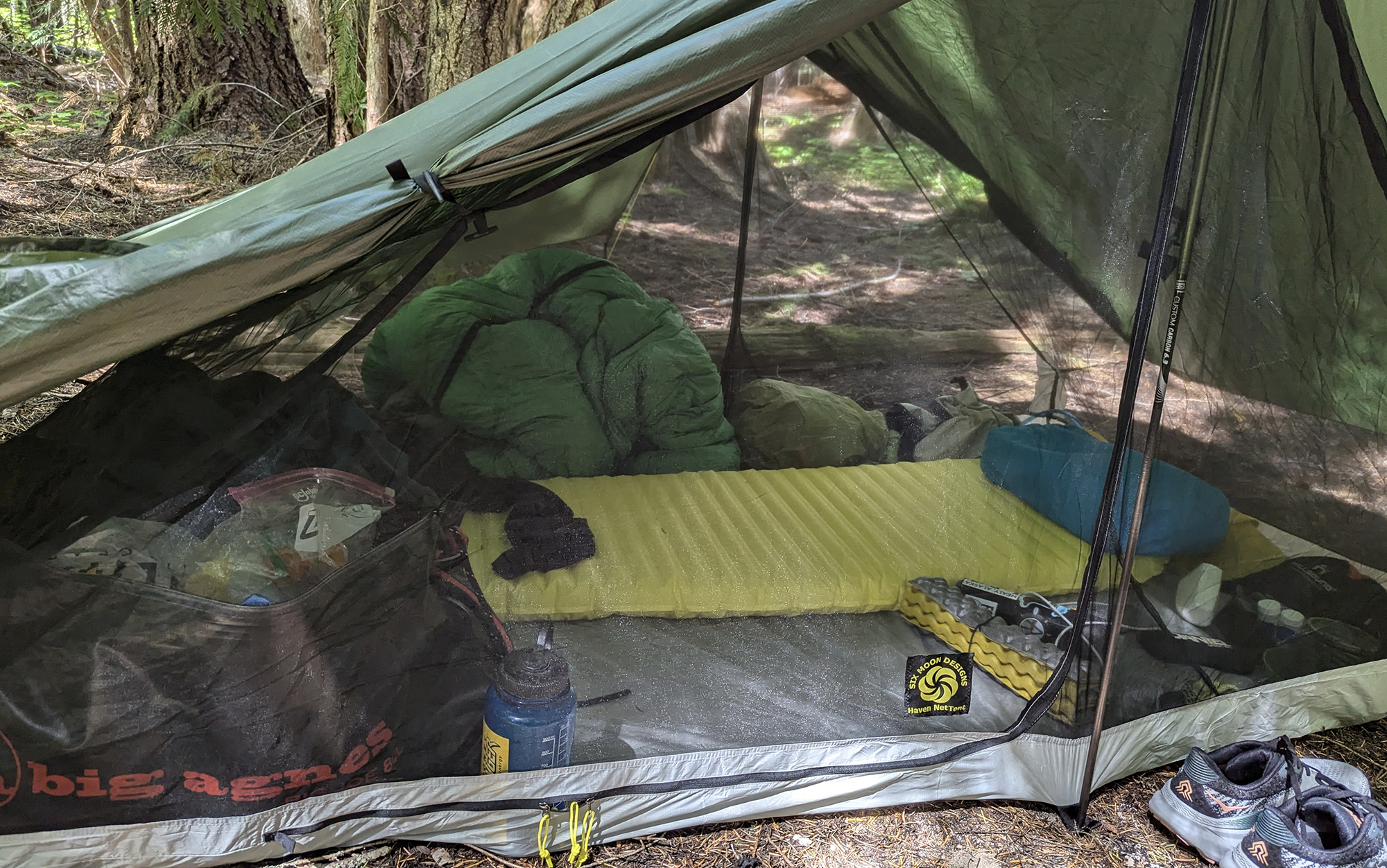
Adam Tycaster
All testers noted that the inside of the tent was plenty spacious (this one easily passed our Two Dudes in a Tent test), although two mentioned that they wished the bathtub floor had come up a bit higher. Helmuth also noted that the zippered doors are both on the same side of the interior bug net, yet the rainfly doors open on opposite sides, which seemed odd.
Things to Consider Before Buying a Backpacking Tent
Purpose
Backpackers can expect to face a variety of conditions depending on the time of year and the part of the country they are exploring. Knowing the extremes of your climate is essential to choosing a tent. First-time tent buyers should know that four-season tents are generally built to hold heat in, and are not an appropriate choice if the primary season you plan to backpack in is summer.
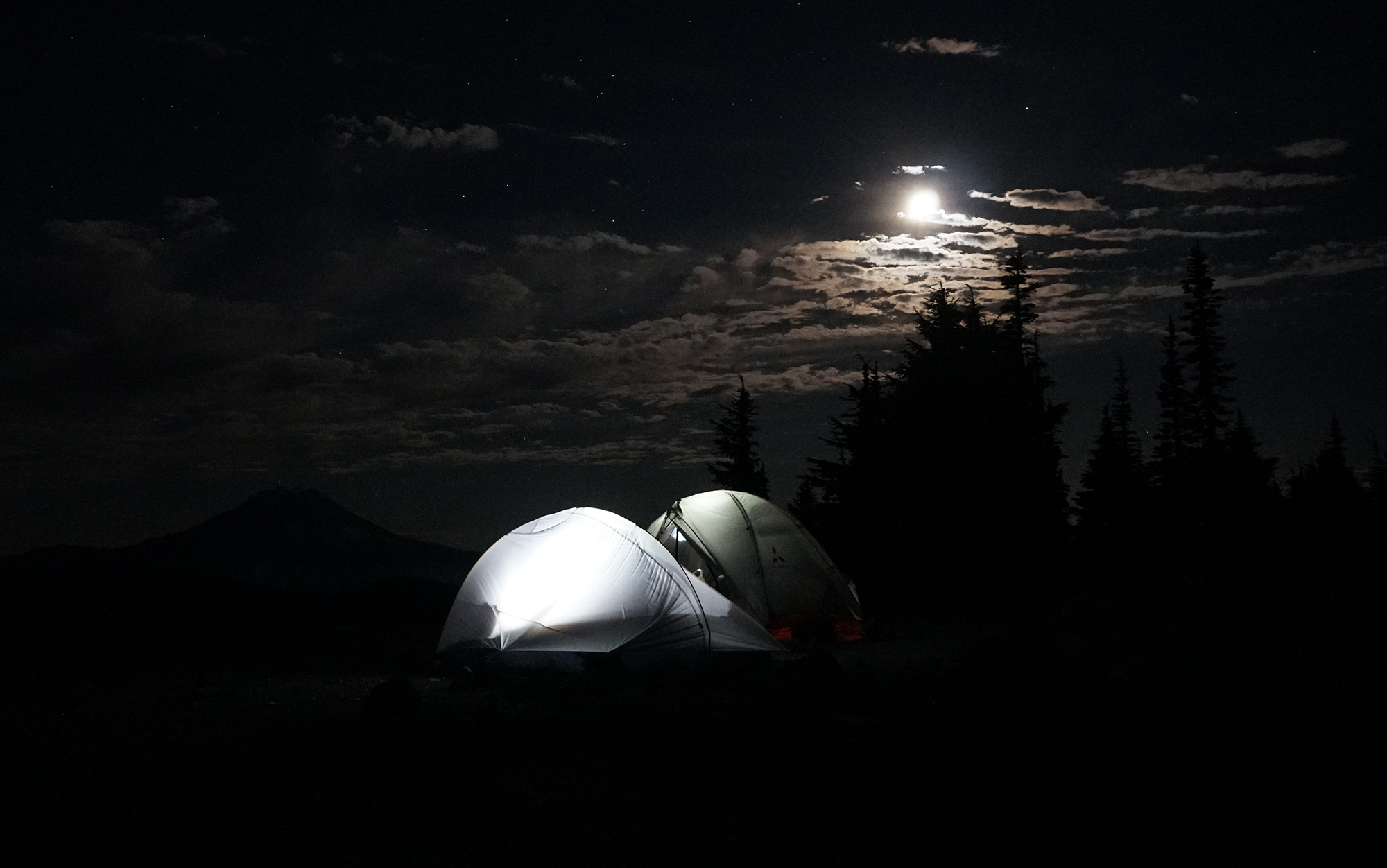
Alex Robinson
Freestanding vs. Non-Freestanding Backpacking Tents
The majority of backpacking tents on the market are freestanding. This means that once you snap poles into their grommets, you’ll have a reasonable approximation of what the final structure will look like. Freestanding tents are a great choice for first-time backpackers. There tends to be less guesswork during the initial set up. The advantage of non-freestanding tents is that they are typically lighter than their freestanding counterparts (some even do away with separate poles by incorporating trekking poles into the design), but they usually take some practice to get used to. Because they need to be staked out, they are typically a less appropriate choice for places, like the desert, where that isn’t always an option.
Single-Wall vs. Double-Wall Backpacking Tents
With these tents, the main body of the tent is waterproof, rather than a separate rainproof shell that attaches to the exterior side of the poles. Single-wall tents tend to work best for backpackers in climates with minimal bugs and a tendency for rain. The main advantage is that the interior of your tent will stay dry during setup (they are usually also a bit lighter in weight), but they tend to collect condensation more rapidly on the interior and run hotter at the height of summer. Double-wall tents, which have a mesh body with a waterproof layer thrown over top, tend to breathe better.
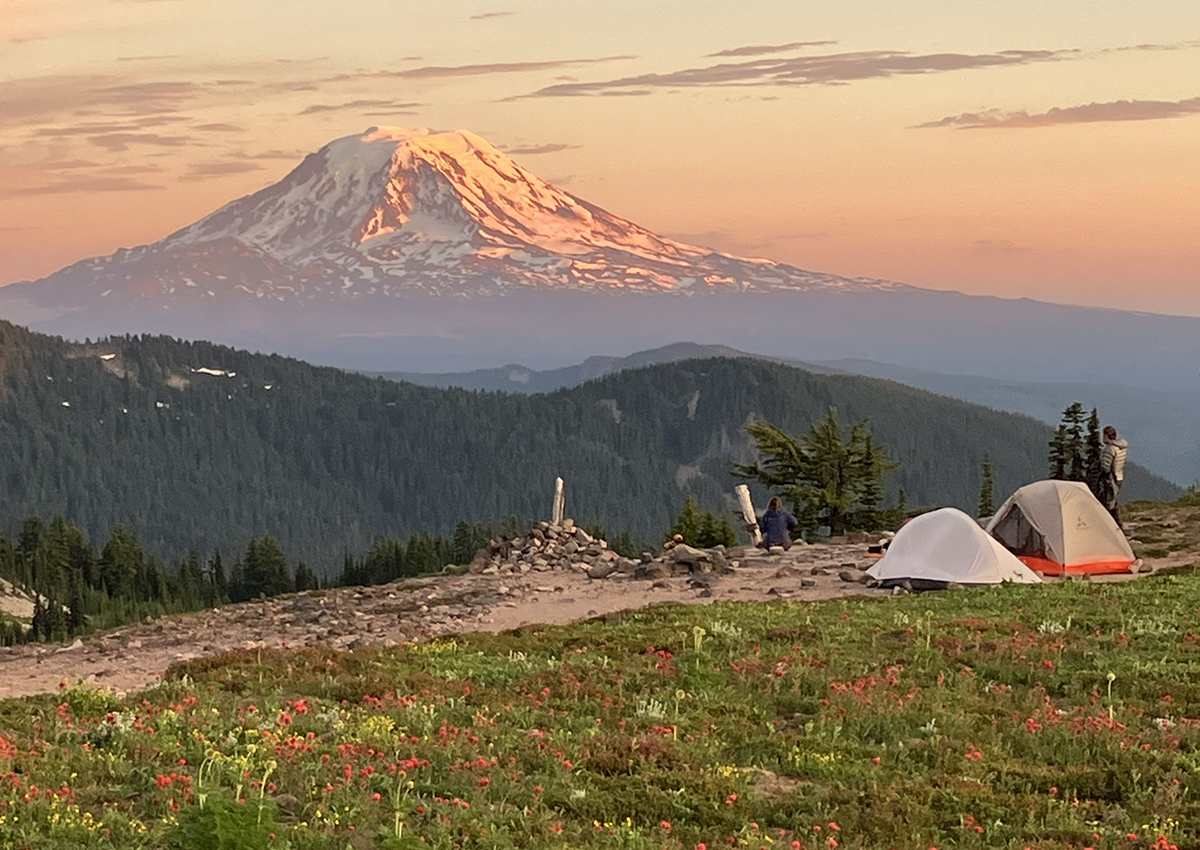
Diana Helmuth
Weight
Car camping tents are bulky, with even the lightest models weighing upwards of 5 pounds per person. Backpacking tents are much lighter, typically weighing less than 3 pounds per person, with some ultralight models approaching 1 pound or less. There is usually a tradeoff with weight savings for durability and price with backpacking tents. Backpackers focused on short trips may prefer a heavier option while those that plan on high-mileage days would do better with a lightweight model.
Size
Over the years, many backpackers have found that a one-person tent is a tight squeeze for anyone over 5-feet, 10-inches — forget about squeezing in your pack and the rest of your gear. It’s not uncommon to see larger backpackers opt for two-person, or even three-person, tents to get enough leg room.
FAQs
The cost of a backpacking tent is almost always tied to weight—the lighter a tent is, the more you can expect to shell out for it. Our budget pick is easily the cheapest option available—most single-person backpacking tents run between $150 and $400, while backpacking tents for three or more people can run upwards $1,000. I recommend aiming to spend around $300 for a one-person tent, $400 for a two-person tent, or $500 for a three-person tent.
The key differences between backpacking tents and campings tents are weight and volume. Most camping tents are too large to fit inside of a backpacking backpack (although you can sometimes strap them to the outside) and they tend to weigh upwards of 5 pounds per person. That being said, if your camping tent is under 5 pounds per person, and you can securely strap it to your pack, then this can be a reasonable way to find out if you like backpacking enough to invest in lighter gear specifically for the trail.
Read Next: The Best Family Tents
Backpacking tents typically weigh between 1 and 3 pounds per person, with some ultralight models (usually designated as such with the initials “UL”) weighing even less. Unless you are an experienced backpacker, I recommend staying away from tents with poles made from lightweight materials (such as carbon fiber), as these tend to be quite fragile. Dyneema is a popular lightweight fabric that is increasingly being used by tent manufacturers, but it comes with a substantial price bump (and tends to look, though not perform, worse for wear over time).
Final Thoughts on the Best Backpacking Tents
There are great backpacking tents on the market today for every budget and backpacking style. The introduction of ultralight tents onto the market has led to a revolution in both weight-savings and engineering. But first-time backpackers should shop cautiously, as many of the lightest tents on the market require special handling and have a shorter lifespan. Choose the best backpacking tent for the adventures that you are planning, rather than what is the latest and greatest.
Freestanding and Semi-Freestanding Tents
Trekking Pole and other Non-Freestanding Tents
Read the full article here

